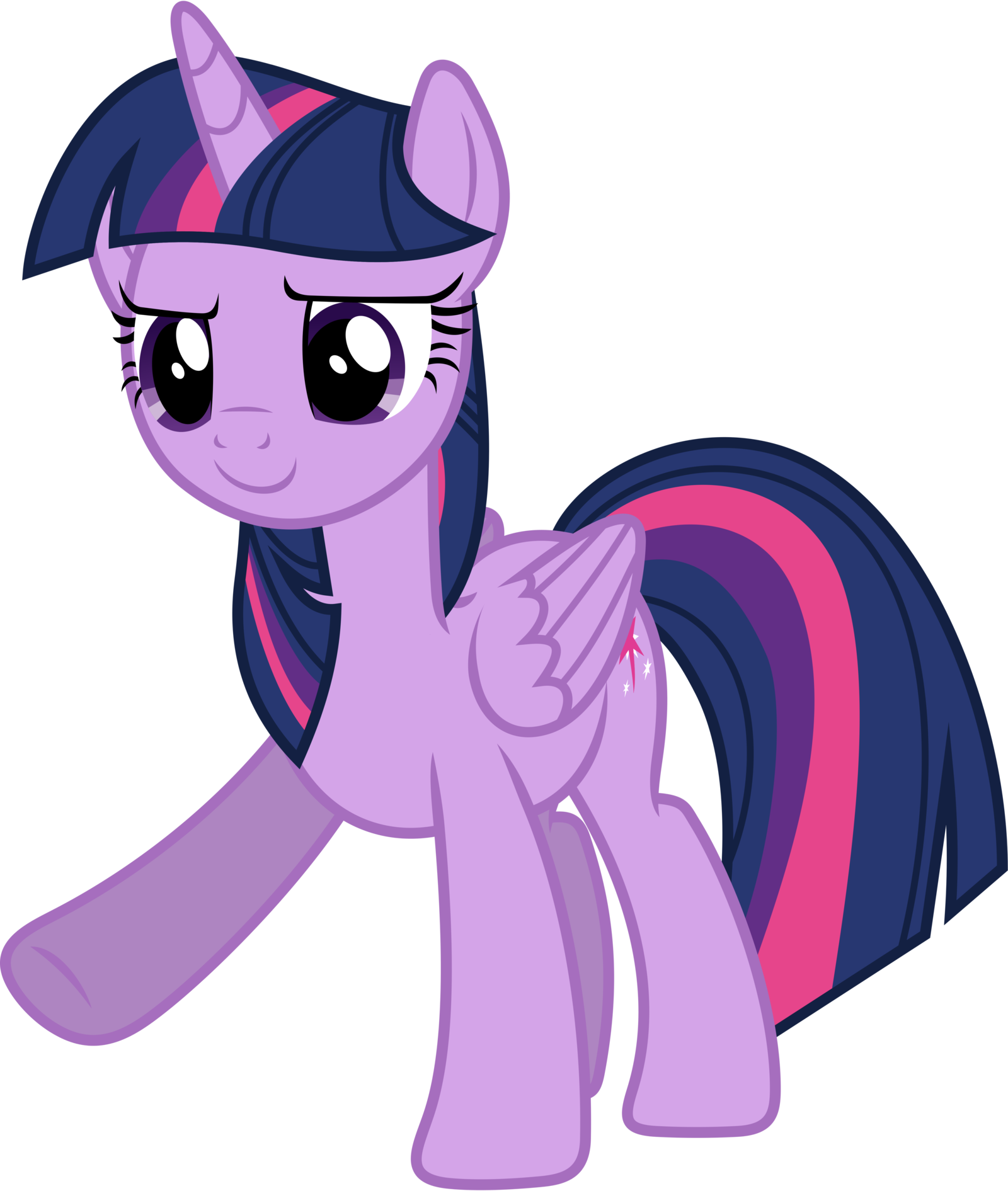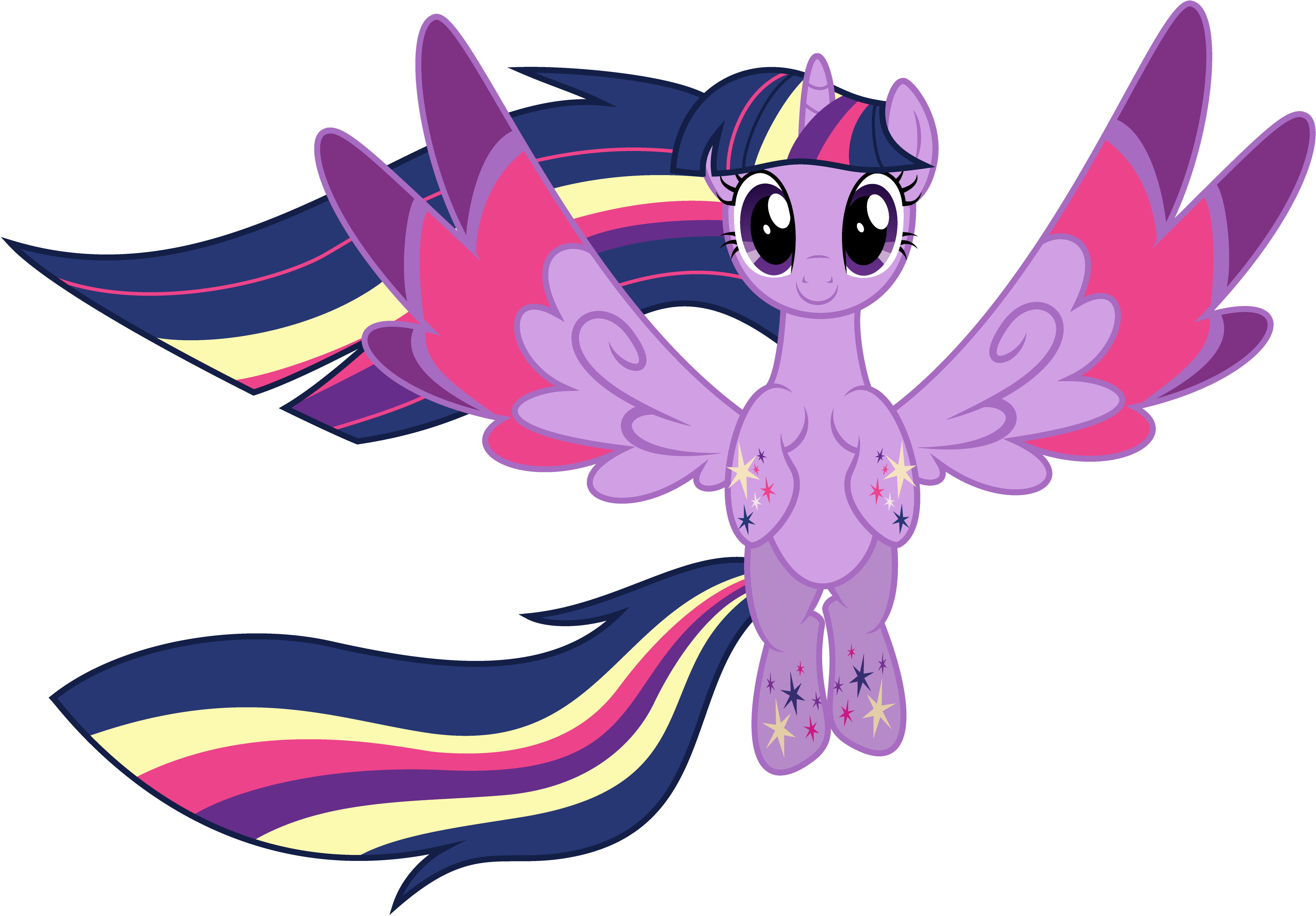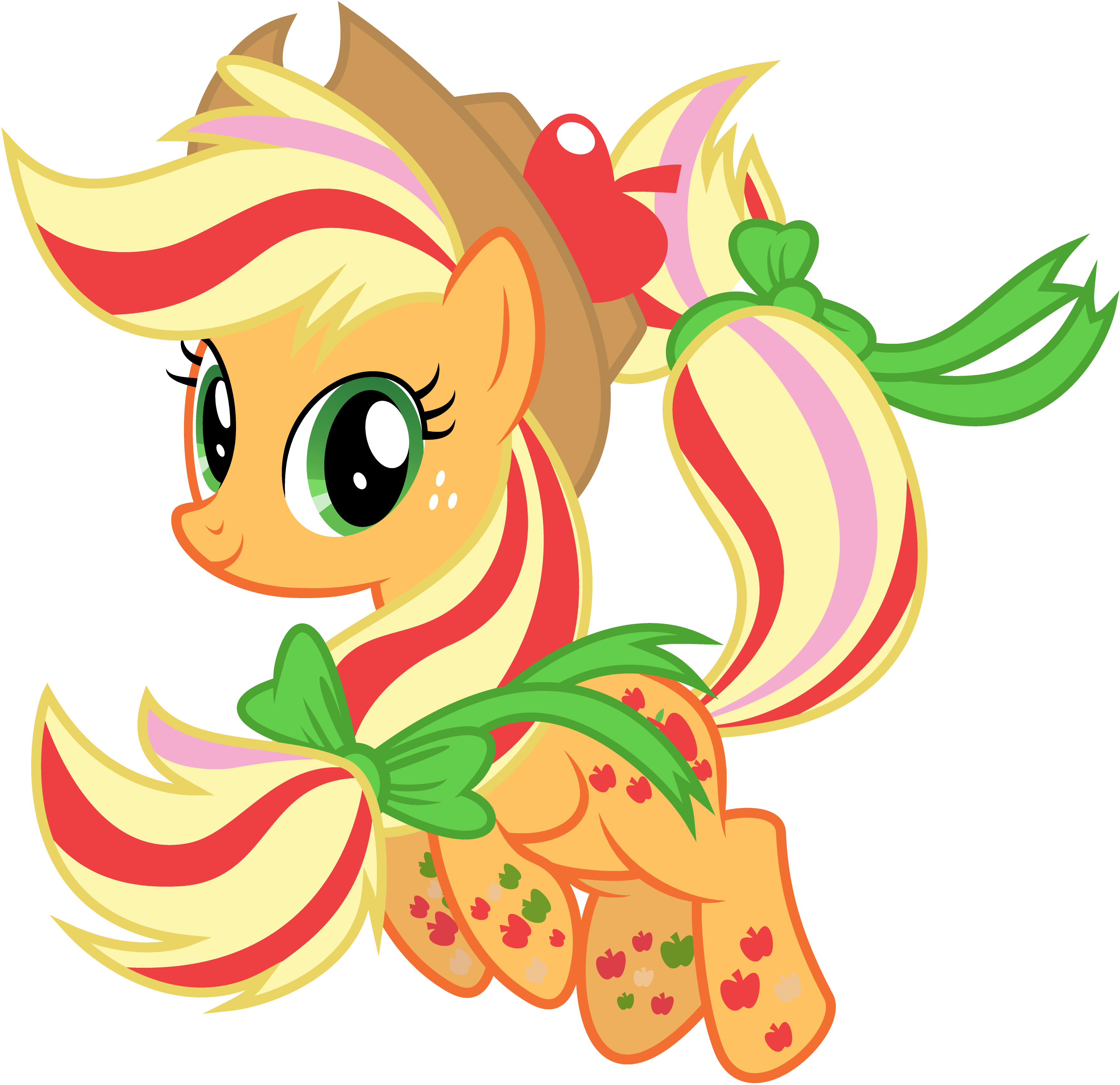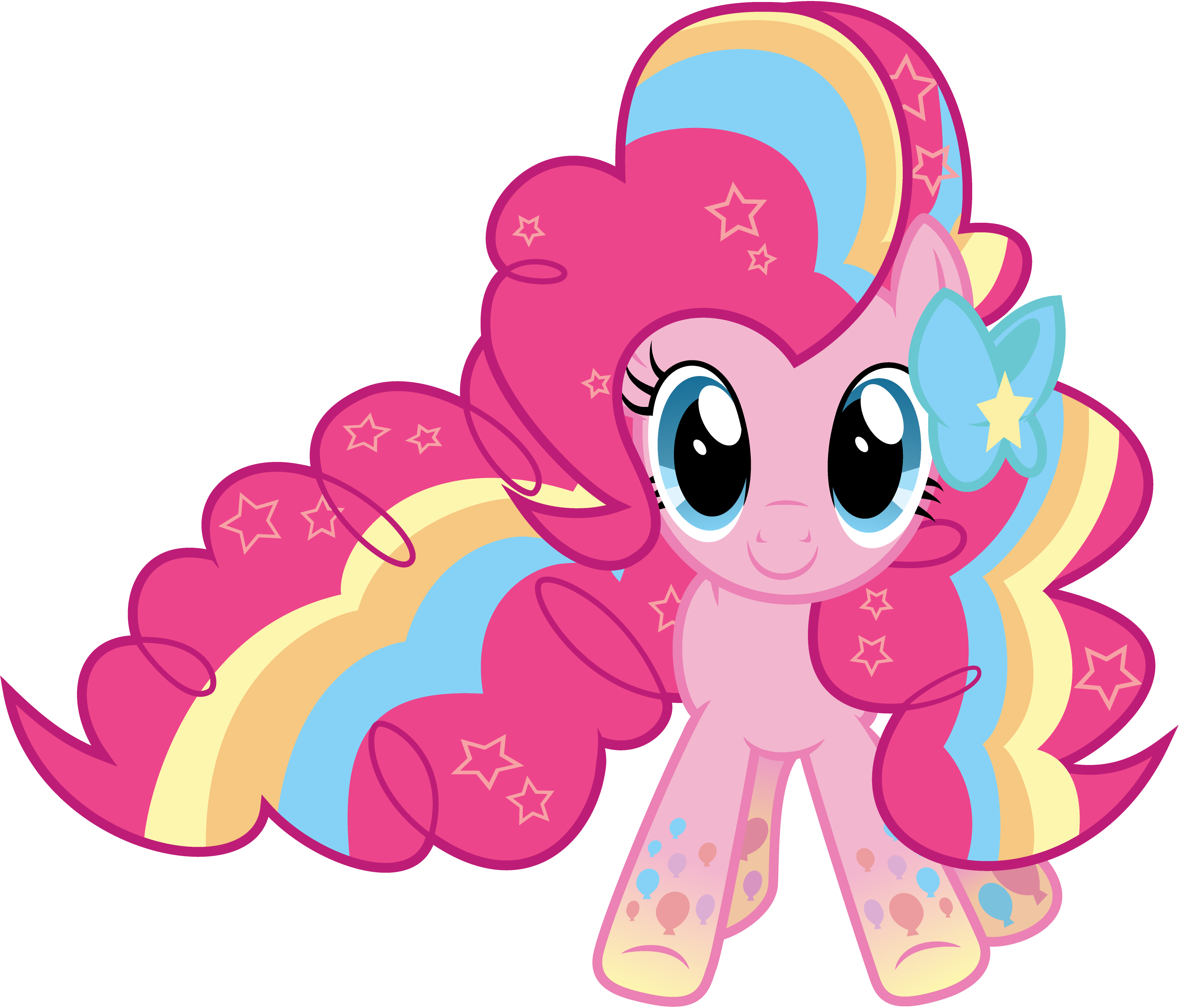-
Registration is disabled due to constant spammers. Email [email protected] and we will temporarily re-enable registration for you.
You are using an out of date browser. It may not display this or other websites correctly.
You should upgrade or use an alternative browser.
You should upgrade or use an alternative browser.
Hachiko's Pony Conference Dynasty
- Thread starter Hachiko
- Start date
Hachiko
The Akita on Utopia
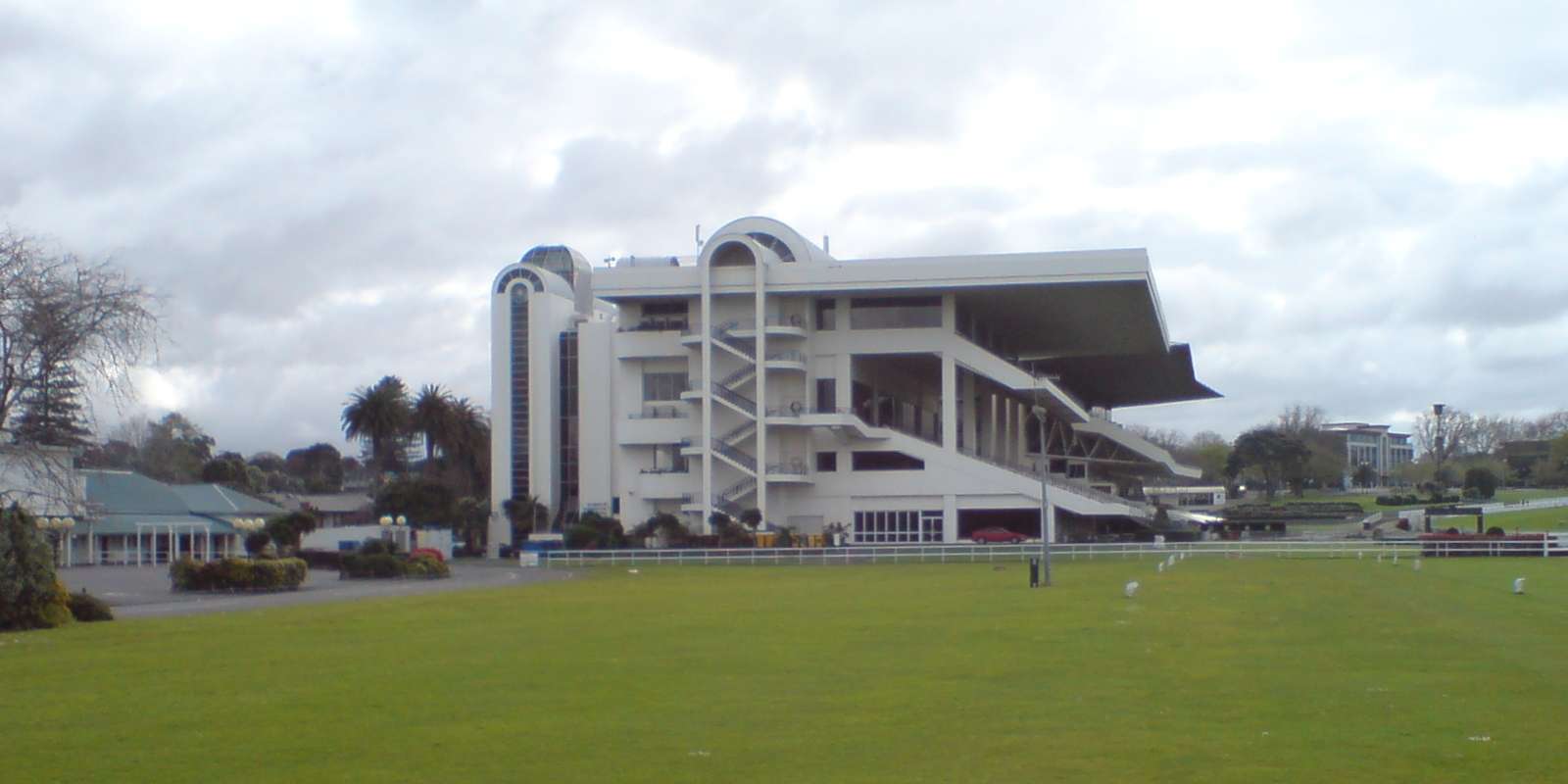
The Mystique of Ellerslie Racecourse
By Hearst Schlitz III
The Ponyville Express
October 13, 2021
Ellerslie Racecourse is the main racecourse in Ellerslie, Auckland, New Zealand for thoroughbred racehorses. It is an undulating, grass circuit of approximately 1,900 m. The first race meeting was held at Ellerslie on 25 May 1874. At this time the racecourse was a considerable distance outside the city and it took Aucklanders up to several hours to get to the course by carriage. Many took the trains, though with the demand created by the event, as late as in 1910 they often had to travel in open cattle trucks because there were not enough normal coaches available for the demand of the extra services.
Ellerslie Racecourse was the location of the first automatic totalisator, designed by George Julius and installed in 1913. During the 20th century, Ellerslie Racecourse provided plants for Kingseat Hospital.
Champion racehorses to have raced at Ellerslie include Kindergarten, Balmerino, Bonecrusher, Uncle Remus, Japan Cup winner Horlicks, Il Tempo, Mr Tiz, Sunline (who was buried at the racecourse in 2009) and Jimmy Choux.
Ellerslie is home to two of New Zealand's major racing carnivals - the Summer Carnival and Auckland Cup Week. The Summer Carnival is run in the Christmas-New Year period with Boxing Day and New Year's Day formerly being home to the New Zealand Derby and Auckland Cup respectively, but these were moved to the new Auckland Cup Week in March 2006.
Stteplechasing at Ellerslie features the well-known "hill", a part of the course not used for flat racing. The major steeplechase at Ellerslie, the Great Northern Steeplechase, requires the horses to climb this hill 3 times in the 6400m event.
Hachiko
The Akita on Utopia
.png)
Applejack "outbucked" by Boise State, 67-52
By Ed Lee
The Orchard
October 16, 2021
Despite Robbie Ingram's heroics, Big Macintosh's Applejack State Appleknockers were outdone by the ground attack of the Boise State Broncos in their 67-52 defeat at Applejack Stadium in Apple Acres, Calif. Ingram passed for 292 yards and five touchdowns while rushing for 126 more yards.
Halfback Richard Beverly ran for 238 yards and two touchdowns, tight end James O'Connor caught 11 passes for 91 yards and three scores and wide receiver David Banks caught four passes for 55 yards and two touchdowns. Strong safety Eric Williams led the Knockers in tackling with 17 tackles and an interception while free safety Jonathan Holley added 10 hits.
"We got outbucked, y'all," said Coach Macintosh after the game. "I don't kno how else I can put it to y'all. This wasn't a good game from us defensively. We may in some trouble next week, now don't you know."
Applejack State improve to 1-4 and return to action next week at home against the Fluttershy Spirit.
Hachiko
The Akita on Utopia
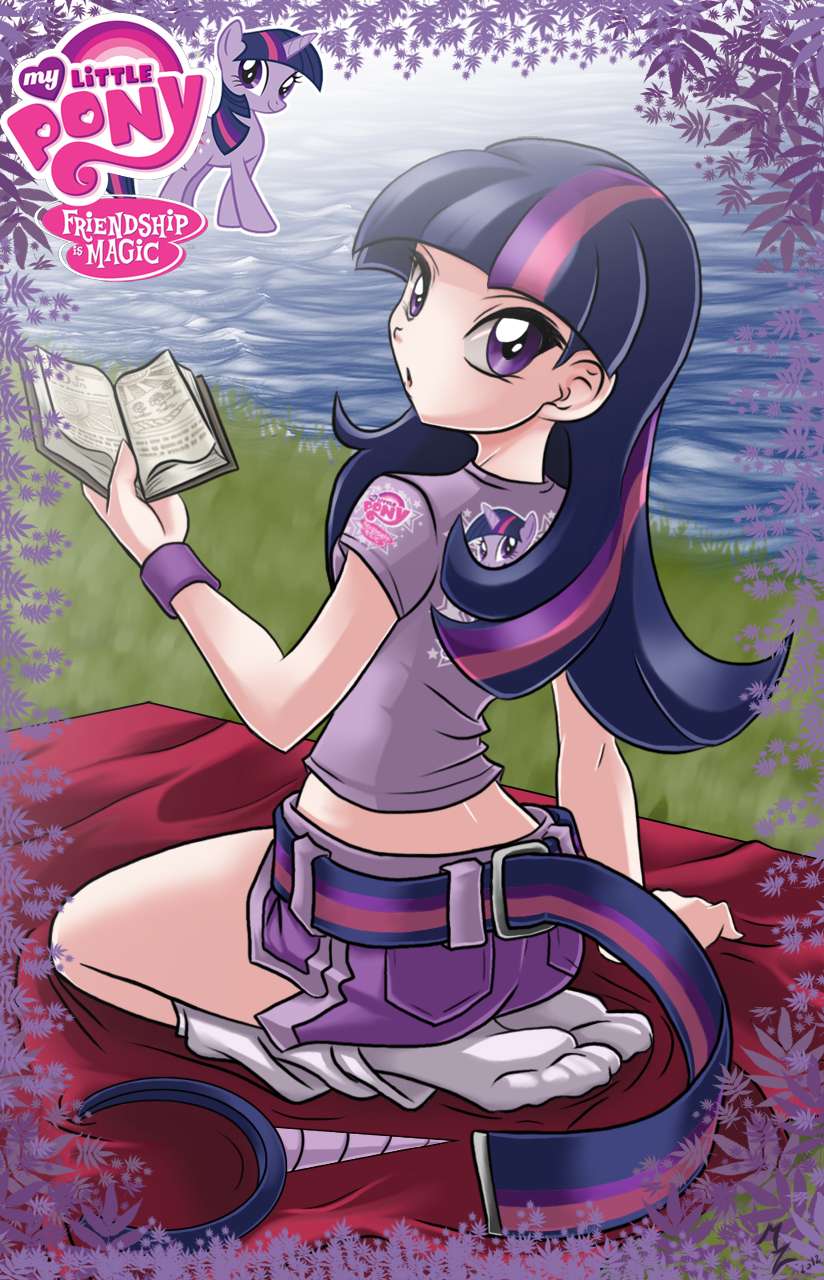
Twilight Sparkle introduces new fight song
By Robert "Hots" Thurston
The Daily Twilight
October 17, 2021
A songwriting contest took place last week on the campus of Twilight Sparkle University and the winner of the contest is a freshman physics major named Ken Hanesaki, from Los Angeles, Calif. The song is called "The Twilight To Win" and is based off the fight song of the Port Adelaide Football Club.
"I wanted to bring an energetic feeling to Twilie because the founder is a nice lady and a pony I can ride on without any clothes off," said Hanesaki, who is known for running every day through the streets on Ponyville at night to stay fit. "I like this university and the feeling you get when being a part of the magic.
"So I hope everyone gets behind this song because it really captures the youthful essence of this place."
---
We want the Twilight to win,
Twilight to rule,
Come on, the Unicorn aggression!
Cause Twilight Sparkle is here
And this is our year.
Winning games is part of our tradition.
We'll never stop, stop, stop
Till we're top, top, top.
There's history here in the making.
We want the Twilight to win.
We'll never give in
Till the victory's ours for the taking.
TWILIE!
We got a force that's so strong
That can't go wrong
With the Ponyville crowd,
So shout it out loud.
All our heroes are those
Who earn the right
To don the purple,
Heliotrope and white.
And the world's supporters
Standing tall,
Summer, winter, spring and fall...
They want the Twilight to win,
Twilight to rule,
Come on, the Unicorn aggression!
Cause Twilight Sparkle is here
And this is our year.
Winning games is part of our tradition.
We'll never stop, stop, stop
Till we're top, top, top.
There's history here in the making.
We want the Twilight to win.
We'll never give in
Till the victory's ours for the taking.
TWILIE!
Twilight to rule,
Come on, the Unicorn aggression!
Cause Twilight Sparkle is here
And this is our year.
Winning games is part of our tradition.
We'll never stop, stop, stop
Till we're top, top, top.
There's history here in the making.
We want the Twilight to win.
We'll never give in
Till the victory's ours for the taking.
TWILIE!
We got a force that's so strong
That can't go wrong
With the Ponyville crowd,
So shout it out loud.
All our heroes are those
Who earn the right
To don the purple,
Heliotrope and white.
And the world's supporters
Standing tall,
Summer, winter, spring and fall...
They want the Twilight to win,
Twilight to rule,
Come on, the Unicorn aggression!
Cause Twilight Sparkle is here
And this is our year.
Winning games is part of our tradition.
We'll never stop, stop, stop
Till we're top, top, top.
There's history here in the making.
We want the Twilight to win.
We'll never give in
Till the victory's ours for the taking.
TWILIE!
Hachiko
The Akita on Utopia
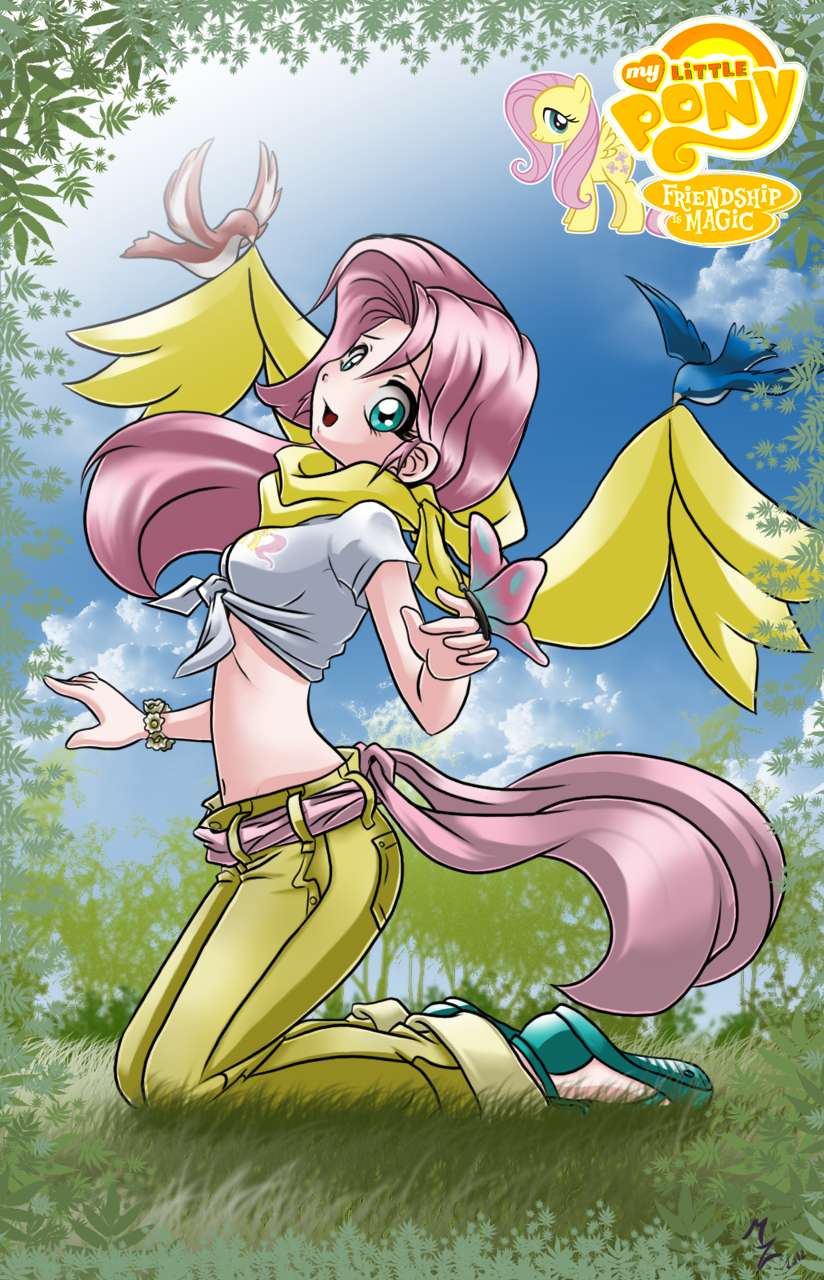
A fight song for Fluttershy
By Rosita Hernandez Vega
The Daily Yay
October 18, 2021
At Fluttershy College, students were asked by the founder, Fluttershy, to compose the fight song for the university. The winner of the contest, which saw 300 entries submitted, was a sophomore history major named Adrian Huang of Houston, Tex. The song, "Good Ol' Fluttershy Forever," was based on a tune called "Goodbye Dolly Gray."
"I dedicated this song to our current offensive coordinator, Coach Travis Rountsaville (@Travis7401), because he told us that he likes slapstick comedy and hilarious bite to musical garbage," said Huang while eating a dagwood with his mouth open. "No, seriously, it's an infectious song that the Spirit community will like. Just ask Collingwood."
"I like the tune, it's simple and fresh," said Fluttershy. "I sometimes hum the melody when I'm working in my office. I like the confidence in the lyrics, too. I think we call it a shot in the arm. Something."
---
Good Ol' Fluttershy forever,
We know how to play the game.
Hearts and hooves will stick together
To uphold the Spirit name.
See the barrackers a-shouting,
Pointing up to the sky.
Oh, the game will be a cakewalk
For the Good Ol' Fluttershy. Yay!
We know how to play the game.
Hearts and hooves will stick together
To uphold the Spirit name.
See the barrackers a-shouting,
Pointing up to the sky.
Oh, the game will be a cakewalk
For the Good Ol' Fluttershy. Yay!
Hachiko
The Akita on Utopia
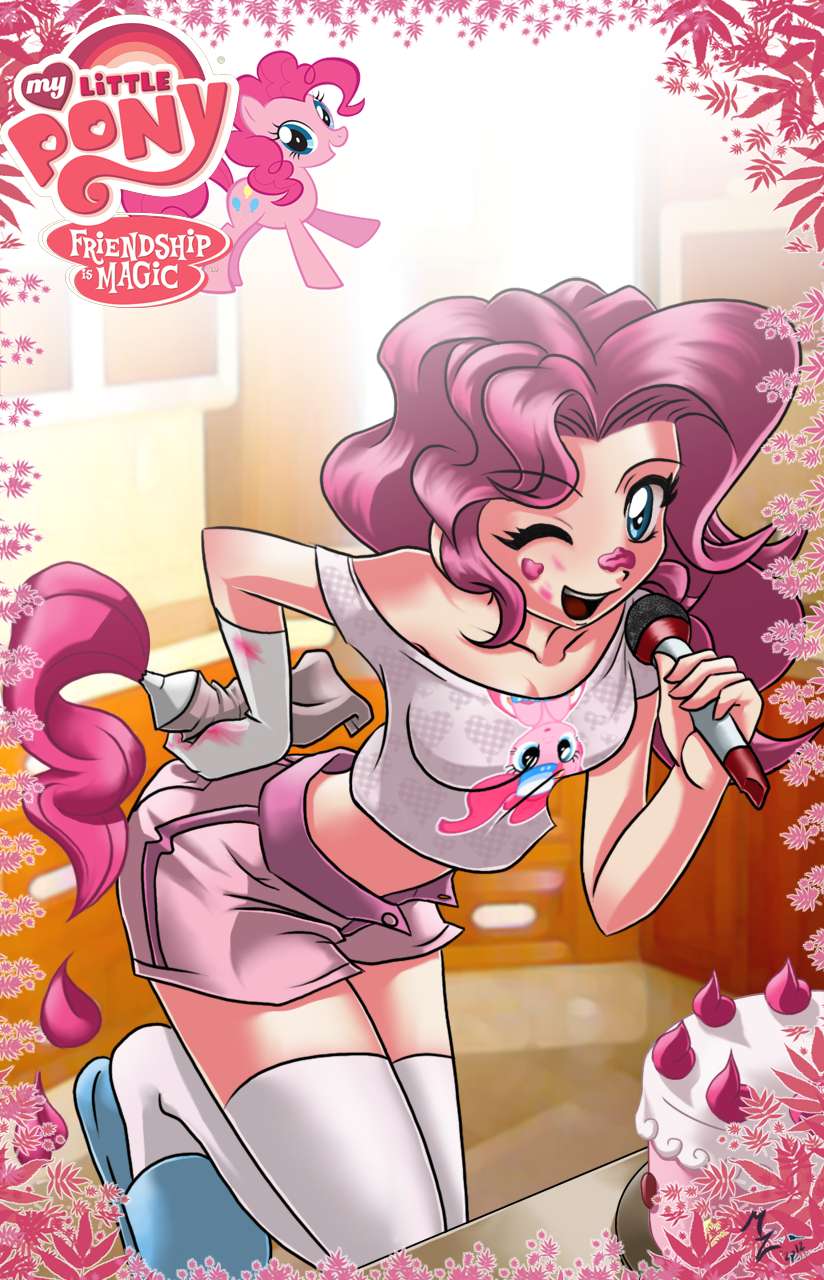
Song with swag for Pinkie Pie
By Hanna Mirabelle
The Daily Party
October 19, 2021
Call it a song from having one too many drinks at the wheel. Call it a song with all frosting and no cake. Call it a song that has too much swag when in reality there is way too much fail. But, get to know it and call it the official fight song of the Pinkie Pie Major Trouble.
At the end of a big somewriting contest on the campus of Pinkie Pie University, junior astrophysics major Wong Wei composed "We Are From Pinkie Pie," based on the standard "Lily of Laguna." Over 400 submissions were placed in the contest and it was the founder who, allegedly, picked it out of a hat.
"This song is dedicated to our football team offensive coordinator, @TrojanMan ," said Wong, who has a think Cantonese accent, as he arrived fresh off the boat at the age of 10. "I wanted to develop a song people can sing after a big win while having a drink because we love to imbibe after big wins. So, have fun, everyone!"
---
We are from Pinkie Pie.
We are the boys from Pinkie Pie.
We're the team that never lets you down.
We're the only team your party knows.
We've got your number,
And you're in trouble, right on the double,
Because you know that you've been playing
Against the famous Pinkie Pie!
We are the boys from Pinkie Pie.
We're the team that never lets you down.
We're the only team your party knows.
We've got your number,
And you're in trouble, right on the double,
Because you know that you've been playing
Against the famous Pinkie Pie!
Hachiko
The Akita on Utopia

Rarity keeps its Royal side up
By Roger Hanneberry
The Carousel
October 20, 2021
In spite of a tough year for the Rarity Royals, a fight song has been penned by Rarity College Associated Students (RariCAS) President Kim Hyuna, a junior fashion design major. The song is called "Keep Your Royal Side Up," and is based on the old tune "Keep Your Sunny Side Up."
"Optimism is a key part of the Rarity College of the Arts experience," said Ms. Kim at a ceremony and concert introducing the new fight song at the Tom Rock Playhouse. "So we have to be positive and weather the tough storm that may come to our teams because you can't win all the time, and you can't lose all the time.
"We make it very clear that being a student at Rarity is more important that being an athlete. We're not like Twilight Sparkle, where academics and athletics go hand in hand. We need to stress the importance of succeeding academically and bring fabulous in everything we do. That's the motto of this university: Be Fabulous In Everything You Do."
---
Keep your Royal side up, up
And earn the victory today.
Every battle and every game,
We're going to win for Rarity's name.
Keep your Royal side up, up,
And leave the doubters in fear.
Strive to be the best
And forget the rest.
Keep your Royal side up!
And earn the victory today.
Every battle and every game,
We're going to win for Rarity's name.
Keep your Royal side up, up,
And leave the doubters in fear.
Strive to be the best
And forget the rest.
Keep your Royal side up!
Hachiko
The Akita on Utopia

Rainbow Dash's new fight song 20% cooler
By Jerry Cross
The Daily Dash
October 21, 2021
It takes the minds of two siblings to come up with a song that unites a university in the sky. Mako and Matarou Mankanshoku, second-year master's students from Tokyo, Japan, came up with a fight song for the Rainbows that is sure to get fans amped up for the season. The song is simply named "Rainbow Dash."
"So now," said Matarou, "You have Rainbow Dash the pony, Rainbow Dash the university, and Rainbow Dash the fight song. It's a song that we penned over a week, inspired by this old tune called 'Row, Row, Row.' Mako told me to add a little chanting to it to get the crowd really into the spirit of the game.
"We've never written fight music before; in fact, we never had a song, period," said Mako. "Originally, we were going to call it 'Nobody Beats the Dash' but that was wildly inaccurate. We needed to be a bit realistic when writing this piece. It was fun putting it together and then winning the support of the students. Really good fun."
---
We are from Rainbow Dash,
(WE'RE RAINBOW DASH!)
A blaze of fury,
We're from Rainbow Dash.
(WE'RE RAINBOW DASH!)
In any battle you will see us with a grin,
And we'll go all in,
If we're behind, well, don't you mind,
We're gonna get the win
Because we're Rainbow Dash.
(WE'RE RAINBOW DASH!)
We'll never weaken till the game we play is won.
To the young and the old,
The brave and the bold,
We are from Rainbow (20 PERCENT!)
We are from Rainbow Dash!
(WE'RE RAINBOW DASH!)
A blaze of fury,
We're from Rainbow Dash.
(WE'RE RAINBOW DASH!)
In any battle you will see us with a grin,
And we'll go all in,
If we're behind, well, don't you mind,
We're gonna get the win
Because we're Rainbow Dash.
(WE'RE RAINBOW DASH!)
We'll never weaken till the game we play is won.
To the young and the old,
The brave and the bold,
We are from Rainbow (20 PERCENT!)
We are from Rainbow Dash!
Hachiko
The Akita on Utopia
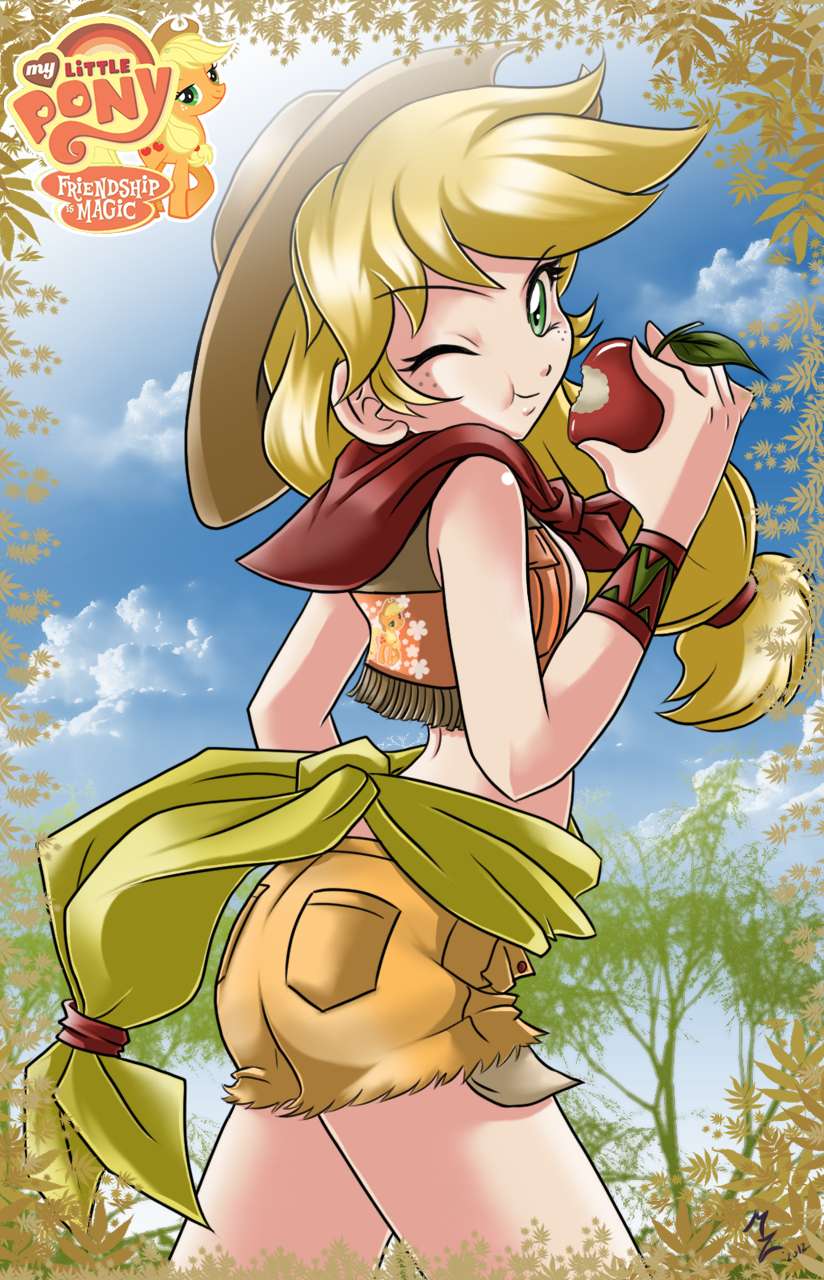
Applejack State stands tall with new fight song
By Dan Druff
The Orchard
October 22, 2021
Applejack State has a new fight song, the result of a song contest that saw 600 entries placed through three stages. The winner: Ph.D student Marika Tachibana, who is set to complete her doctorate degree next spring pending approval of her dissertation. Her piece is entitled "We're the Knockers," and is based off a Ken Walther tune called "We're The Eagles," the fight song of the West Coast Eagles.
"Even though we got hammered against Boise State last week, it's never good to feel down after any poor result," said Tachibana. "You have to keep going, keep fighting, do whatever it takes to succeed and win. This song captures the moment we get a meaningful victory for ourselves and for our university.
"I used the West Coast Eagles theme song because it exudes the type of confidence you like to see from athletes of skill and character. And yes, we have a chapel that has victory bells that are run after every home win in all the sports we play. So it makes a whole lot more sense in terms of relevancy."
Hey Knockers! Hey Knockers!
Hey Knockers! Hey Knockers!
We're bucking high!
We're bucking high!
We're bucking high!
We're bucking high!
In every city, and every town,
You'll see us, far and near.
The Apple Acres smiles again.
Our Applejack is here.
We're the Knockers,
The Appleknockers,
And we're here to show you why
We're a great team living the big dream.
We're the Knockers, we're bucking high!
We play our games with honor,
And we play them very well.
And now we got the Apple magic.
Someone ring the victory bells!
We're the Knockers,
The Appleknockers,
And we're here to show you why
We're a great team living the big dream.
We're the Knockers, we're bucking high!
So watch out all you ponies,
And be sure to take a seat.
Cause you'll get more
Than just our country charms.
We're gonna sweep you off your feet!
We're the Knockers,
The Appleknockers,
And we're here to show you why
We're a great team living the big dream.
We're the Knockers, we're bucking high!
We're the Knockers,
The Appleknockers,
And we're here to show you why
We're a great team living the big dream.
We're the Knockers, we're bucking high!
We're a great team living the big dream.
We're the Knockers, we're bucking high!
We're the Knockers, we're bucking high!
Hey Knockers! Hey Knockers!
We're bucking high!
We're bucking high!
We're bucking high!
We're bucking high!
In every city, and every town,
You'll see us, far and near.
The Apple Acres smiles again.
Our Applejack is here.
We're the Knockers,
The Appleknockers,
And we're here to show you why
We're a great team living the big dream.
We're the Knockers, we're bucking high!
We play our games with honor,
And we play them very well.
And now we got the Apple magic.
Someone ring the victory bells!
We're the Knockers,
The Appleknockers,
And we're here to show you why
We're a great team living the big dream.
We're the Knockers, we're bucking high!
So watch out all you ponies,
And be sure to take a seat.
Cause you'll get more
Than just our country charms.
We're gonna sweep you off your feet!
We're the Knockers,
The Appleknockers,
And we're here to show you why
We're a great team living the big dream.
We're the Knockers, we're bucking high!
We're the Knockers,
The Appleknockers,
And we're here to show you why
We're a great team living the big dream.
We're the Knockers, we're bucking high!
We're a great team living the big dream.
We're the Knockers, we're bucking high!
We're the Knockers, we're bucking high!
Hachiko
The Akita on Utopia
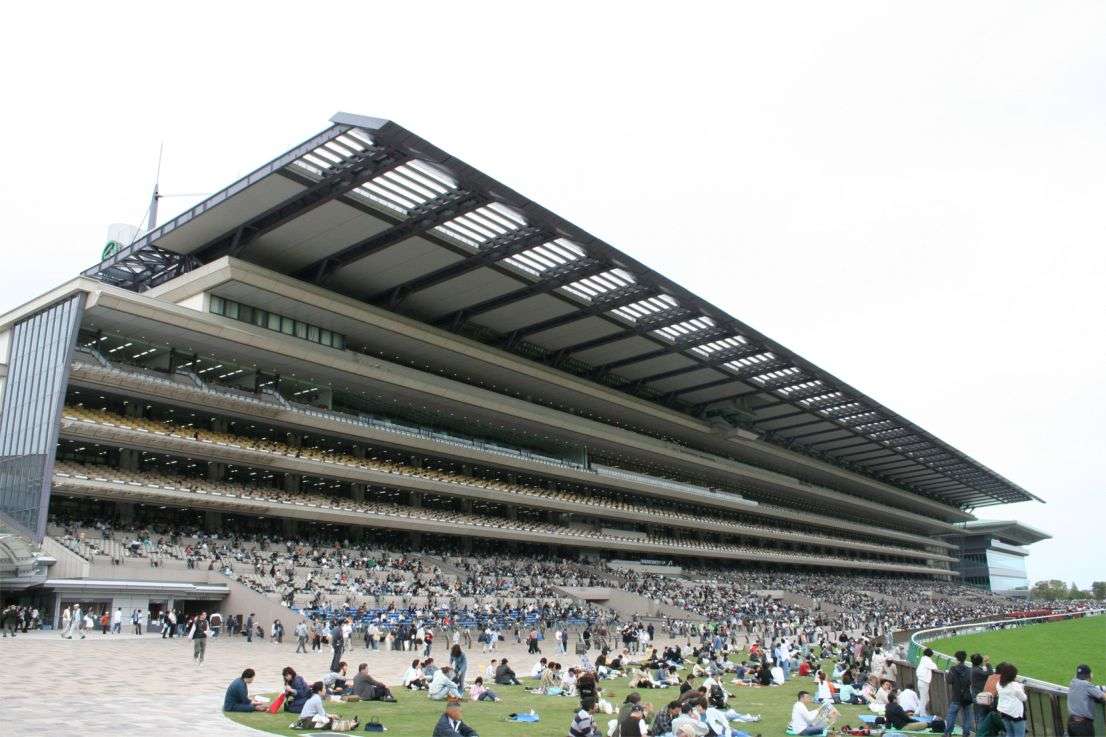
The Mystique of Tokyo Racecourse
By Hearst Schlitz III
The Ponyville Express
October 27, 2021
Tokyo Racecourse (東京競馬場 Tōkyō Keiba-jō?) is located in Fuchu, Tokyo, Japan. Built in 1933 for horse racing, it is considered the "racecourse of racecourses" in Japanese horseracing. It has a capacity of 223,000. Tokyo Racecourse hosts numerous G1 (Grade 1) races, including the Japan Cup, Tokyo Yushun (the Japanese Derby) and the Yasuda Kinen, a part of the Asian Mile Challenge.
Tokyo Race Course's grass course measures 2083m (1¼ miles + 234 feet) with two chutes (1800m and 2000m). Races can be run on the "A Course" rail setting (on the hedge), the "B Course" setting (rail out 3 meters), the "C Course" setting (rail out 6 meters), the "D Course" setting (rail out 9 meters) or the "E Course" setting (rail out 12 meters).
The dirt course measures 1899 meters (1⅛ mile + 290 feet), with a 1600m chute. The jump course measures 1675 meters (1 mile + 215 feet). There was a chute for 3200m races (used for the Tenno Sho Autumn races), but when the race was shortened to 2000m, the 3200m chute was useless and is not in use as of today.
The course was renovated in 2007 (started in 2000), adding the world's largest video screen and upgrading a grandstand, named the "Fuji View Stand", which in today is the main grandstand of the course. The "Memorial 60" grandstand was also added. The HD screen measured 218 feet (66 m) wide by only 37 feet (11 m) high at 8,066 square feet (749.4 m2). In 2009 Kauffman Stadium in Kansas City, Missouri took the world’s largest title with a 84-foot (26 m) by 104-foot (32 m) is 8,736-square-foot (811.6 m2) screen.
Hachiko
The Akita on Utopia
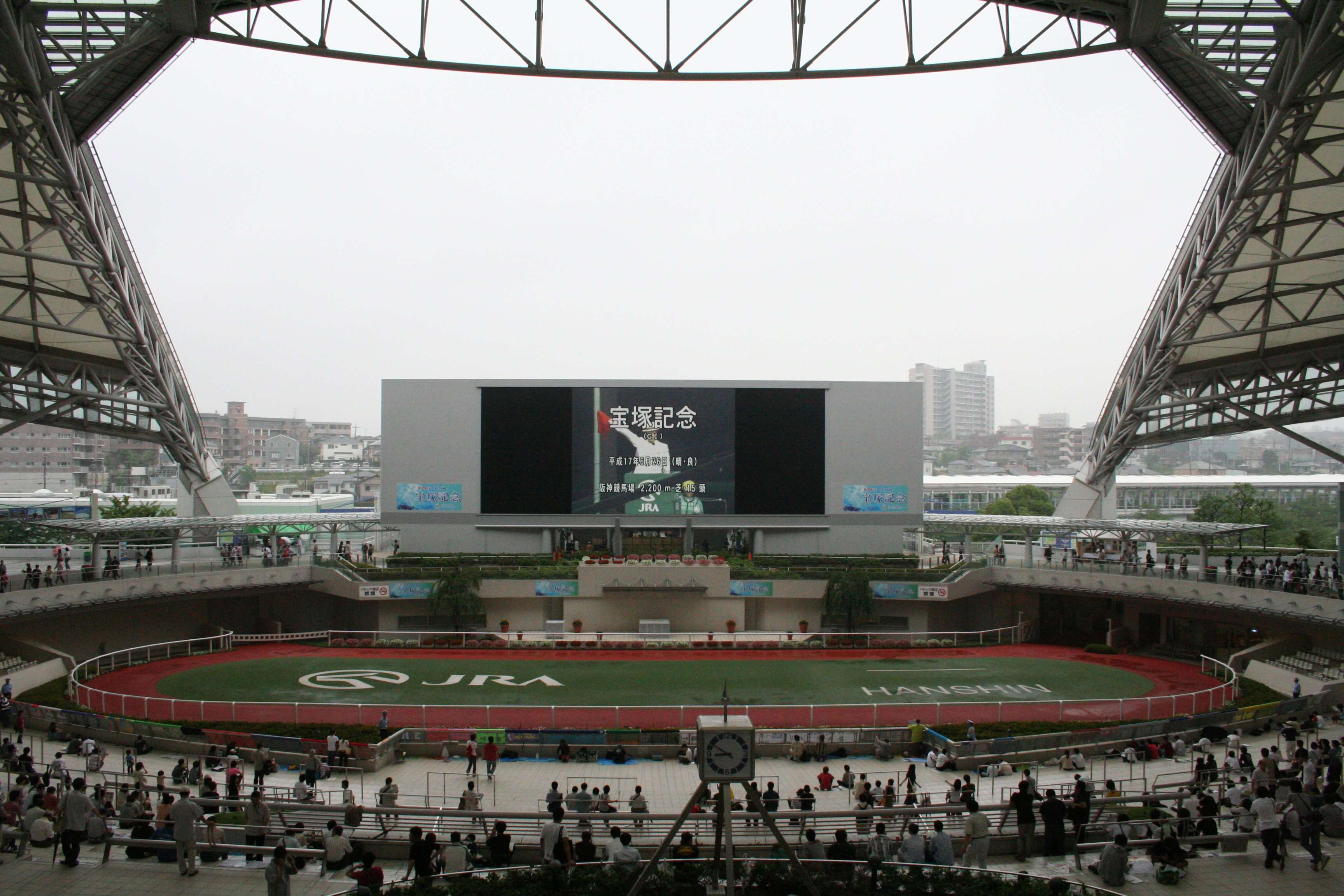
The Mystique of Hanshin Racecourse
By Hearst Schlitz III
The Ponyville Express
November 3, 2021
Hanshin Racecourse (阪神競馬場 Hanshin-keibajō?) is located in Takarazuka, Hyogo, Japan. It has a capacity of 139,000 and it is used for horse racing. The land was originally owned by Kawanishi Aircraft Company, which manufactured combat planes during World War II. After the WWII, GHQ ordered the company to stop manufacturing combat planes, which ended in closing the factory. In 1949, Keihanshin Keiba K.K. built the Hanshin Racecourse. The racecourse was transferred to Japan Racing Association in 1955. A major reconstruction was completed in 1991, and another in 2006.
Hanshin Racecourse has two turf courses, a dirt course, and a jump course. The turf's outer oval (外回り sotomawari?) measures 2089m (11⁄4 miles + 254 feet), and the inner oval (内回り uchimawari?) measures 1689m (1 mile + 261 feet). Two chutes allow races to be run at 1800m/1400m and 2600m/2200m, respectively. Races can be run on the "A Course" rail setting (on the hedge), or the "B Course" setting (rail out 4 meters). The dirt course measures 1518 meters (7/8 mile + 360 feet), with a 1400m chute.
The 2089m-long outer oval turf course was part of a major construction in 2006, and was a 400m-long extension. This would eventually remove two old chutes previously used, including a 1600m chute used for the currently-used 1689m-long inner oval course. The reconstruction (until the course was completely reconstructed) forced stakes races held in Hanshin during the second reconstruction period to be held in other racecourses, including Chukyo Racecourse and Kyoto Racecourse.
Hanshin Racecourse has hosted the Japan Cup Dirt since 2008; races prior to that was held in Tokyo Racecourse.
The Takarazuka Kinen (宝塚記念) is a Grade I flat horse race in Japan for three-year-old and above thoroughbreds run over a distance of 2,200 metres (approximately 1⅜ miles) at Hanshin Racecourse (阪神競馬場) in late June.
It is one of the two "All-Star" races in Japanese horse racing; the other is the Arima Kinen (the Grand Prix) in late December.
It was first run in 1960 with a distance of 1,800 metres. From 1961 to 1965 the race was run over 2,000 metres and since 1966 it has been run over its present distance.
The race is run on the turf and is named after the city of Takarazuka, Hyōgo, the location of Hanshin Racecourse, which is the venue of the race.
As with the Arima Kinen, the majority of the runners in the field are selected by a vote from racing fans, while the remainder are determined by the amount of prizemoney won.
Hachiko
The Akita on Utopia
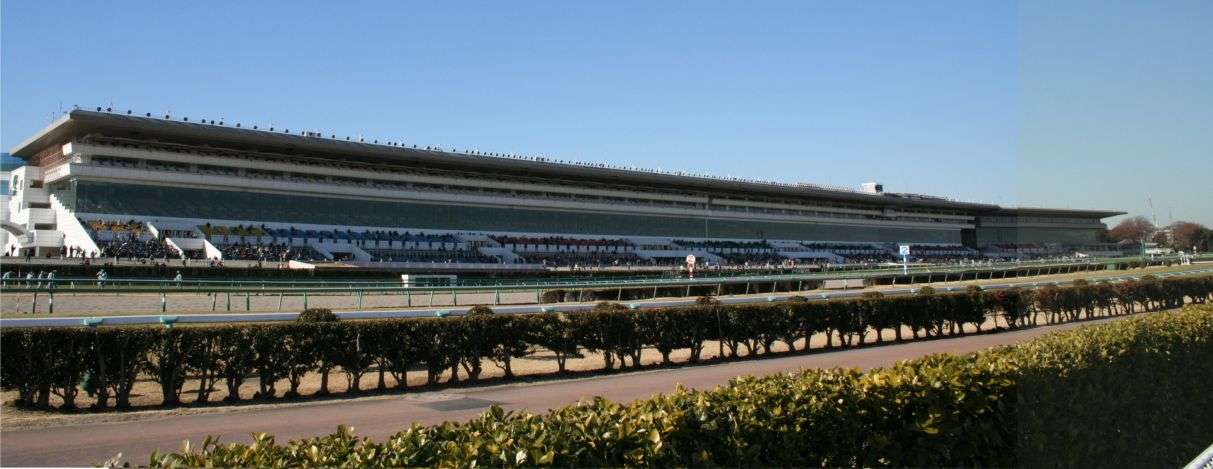
The Mystique of Nakayama Racecourse
By Hearst Schlitz III
The Ponyville Express
November 10, 2021
Nakayama Racecourse (中山競馬場 Nakayama-keibajō) is located in Funabashi, Chiba, Japan. It is used for horse racing. It has a capacity of 165,676. It was built in 1990. It has 15,944 seats. Nakayama Race Course has two grass courses, a dirt course, and a jump course.
The turf's outer oval (外回り sotomawari) measures 1840m (1 1/8 miles + 97 feet) with a 1600m and a 2200m chute, and the inner oval (内回り uchimawari) measures 1667m (1 mile + 189 feet) with a 1400m chute. Races can be run on the "A Course" rail setting (on the hedge), the "B Course" setting (rail out 3 meters), or the "C Course" setting (rail out 7 meters).
1000m, 1400m, 1800m, 2000m, 2500m and 3600m races run on the inner oval, while 1200m, 1600m, 2200m, 2600m and 4000m races run on the outer oval. 3200m races run on the outer oval first, then the inner oval. The dirt course measures 1493 meters (7/8 mile + 278 feet), with a 1200m chute.
The Arima Kinen (有馬記念) is a Grade I flat horse race in Japan open to Thoroughbreds which are three-years-old or above. It is run over a distance of 2,500 metres (approximately 1 mile and 4½ furlongs) at Nakayama Racecourse, and it takes place annually in late December. It is one of the two "All-Star" races in Japanese horse racing; the other is the Takarazuka Kinen in late June.
The event was first run in 1956, and it was initially titled the Nakayama Grand Prix (中山グランプリ). The following year it was renamed in memory of Yoriyasu Arima (1884–1957), the founder of the race. The distance was originally set at 2,600 metres, and it was shortened to the present length, 2,500 metres, in 1966.
The majority of the runners (10 out of 16) in the field are selected by a vote from racing fans, which must be a Japan Racing Association(JRA) horse. If at least one horse in top 10 decided not participating the race, the void will be filled with next available horse until 10 available runners are filled. The remainder of 6 (including National Association of Racing(NAR) and foreign-based horse) are determined by the amount of prize money won in.
Until 1999 the Arima Kinen was open to Japanese trained horses only. However, the Japan Racing Association introduced a new condition in 2000 which allowed for the participation of a foreign trained horse, if it had won that year's Japan Cup (though, no horse eligible has ended up participating this race). The Arima Kinen was classed as a Domestic Grade I until 2006, and it was then promoted to an International Grade I in 2007. Consequently, it is now possible for more foreign trained horses to compete in the race. The maximum number of these was set at four in 2007, and this increased to six for the 2008 running.
Hachiko
The Akita on Utopia
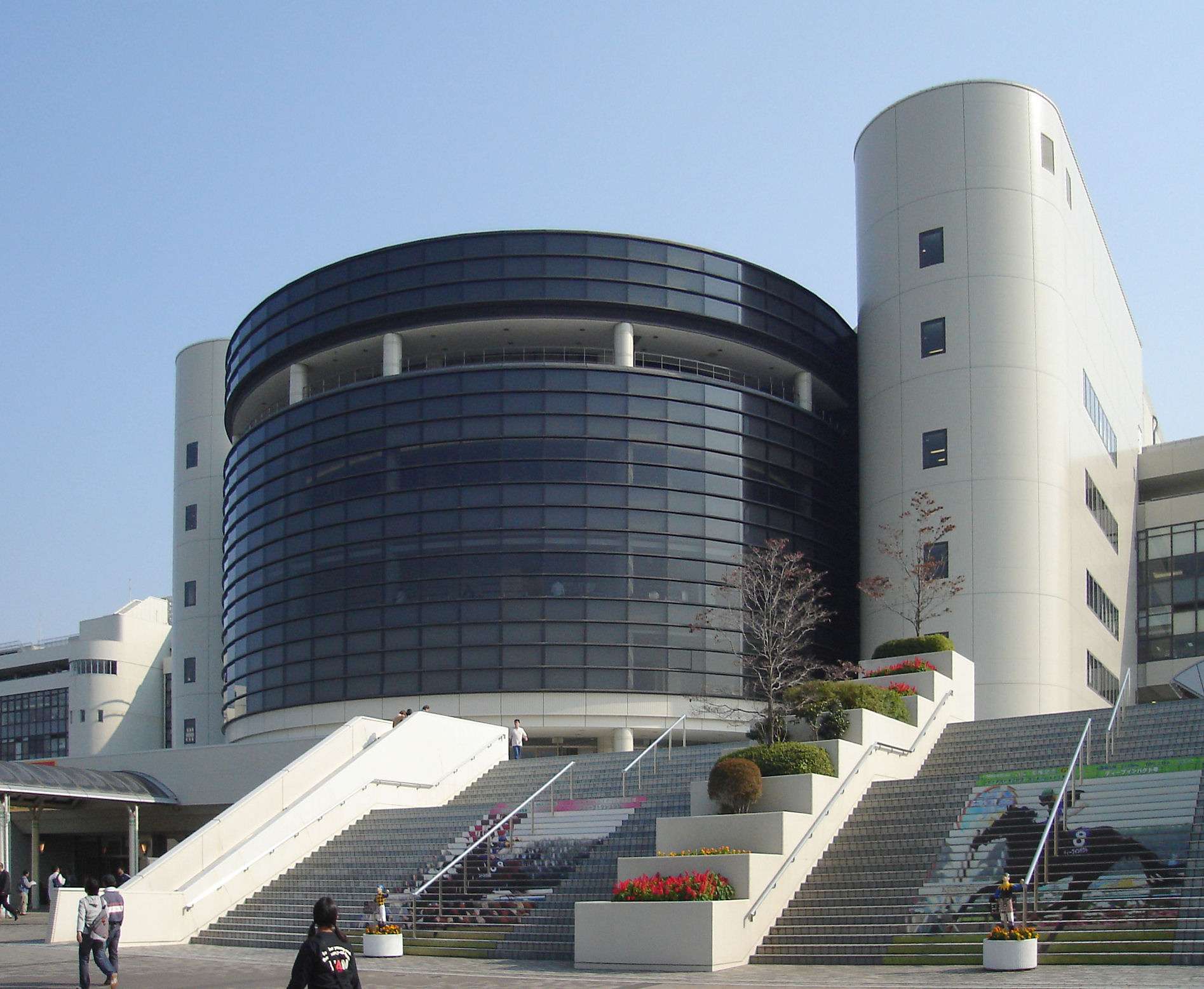
The Mystique of Kyoto Racecourse
By Hearst Schlitz III
The Ponyville Express
November 17, 2021
Kyoto Racecourse (京都競馬場 Kyōto-keibajō) is located in Fushimi-ku, Kyoto, Kyoto Prefecture, Japan. It is used for horse racing. It has a capacity of 120,000. It was built in 1999. Kyoto Race Course has two turf courses, a dirt course, and a jump course.
The turf's outer oval (外回り sotomawari) measures 1894m (1 1/8 miles + 274 feet), and the inner oval (内回り uchimawari) measures 1783m (1 1/16 miles + 240 feet). A chute permits races to be run on either oval at distances between 1400m and 1800m. Races can be run on the "A Course" rail setting (on the hedge), the "B Course" setting (rail out 4 meters), the "C Course" setting (rail out 7 meters) or the "D Course" setting (rail out 10 meters).
The dirt course measures 1608 meters (4 feet less than 1 mile), with a 1400m chute.
The Kyōto Kinen (京都記念 Kyōto Kinen?) is a Grade II race in Japan that is open to international horses. It is held mid February at Kyoto Racecourse in Kyoto, Japan.
The race was first run in 1942. It was not run from 1944 to 1947 due to World War II. Initially the race was run over 3,500 metres (about 2 miles or 1.5 furlongs) and the present race is run over 2,200 metres (about 11 furlongs). Kyōto Kinen has been rated as a Grade II race since 1984 and was opened for foreign trained horses at that time, although foreign horses have never run the race until recently.
It is a popular prep race for Tenno Sho (spring). Takeshiba O, Ten Point, Biwa Hayahide and T M Opera O are horses that won both the Kyōto Kinen and the Tenno Sho. Some horses run this race before going to Dubai. In 2007, Admire Moon won this race and the Dubai Duty Free.
Hachiko
The Akita on Utopia
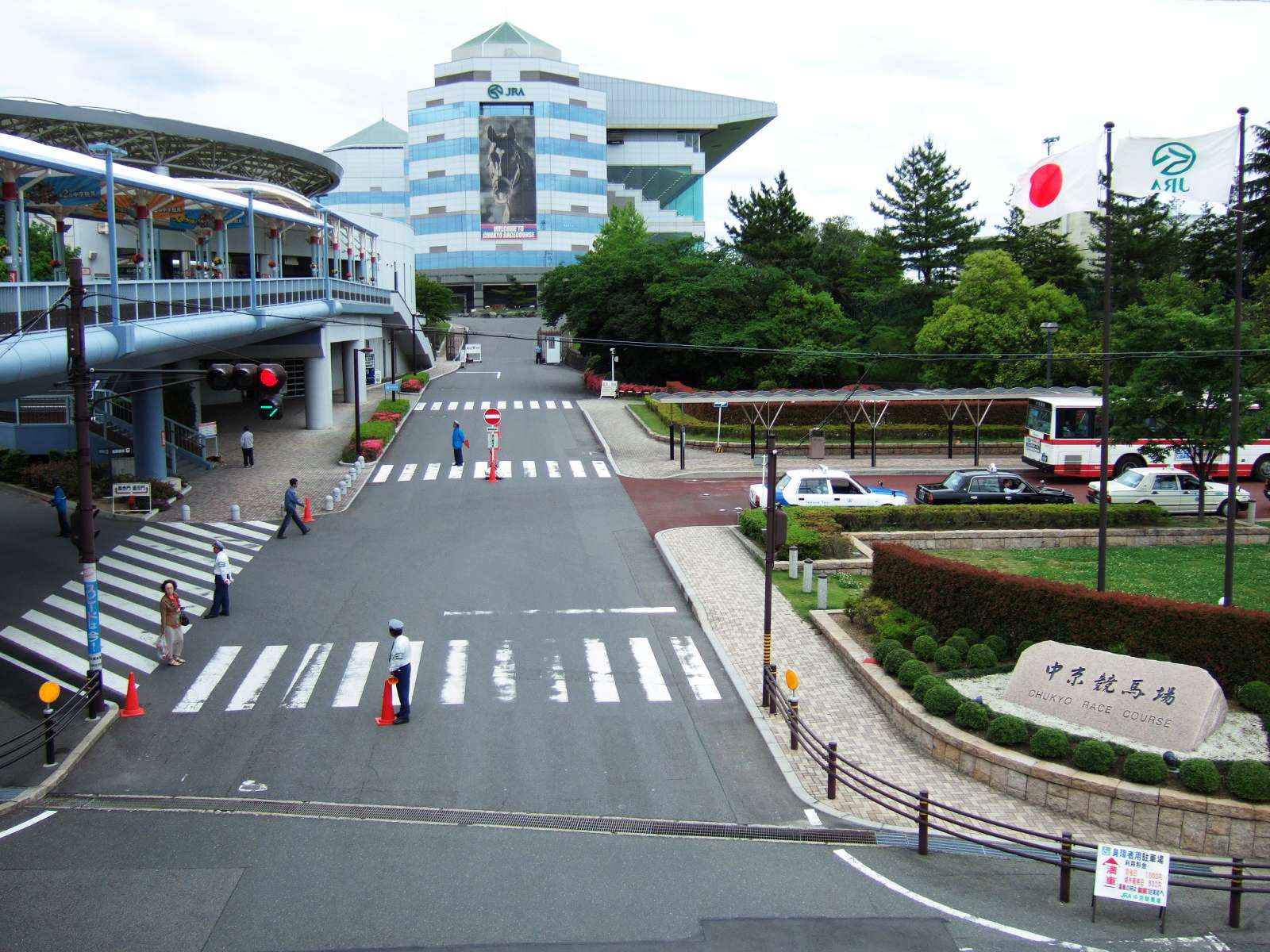
The Mystique of Chukyo Racecourse
By Hearst Schlitz III
The Ponyville Express
November 24, 2021
Chukyo Racecourse (中京競馬場 Chūkyō-keibajō) is located in Toyoake, Aichi, Japan. It is used for horse racing. It was built in 1994. It has a capacity of 58,400. It has 8,795 seats.
Chukyo Racecourse has a grass courses, a dirt course, and a jump course. The turf's measures 1600m (7/8 mile + 629 feet). Races can be run on the "A Course" rail setting (on the hedge), the "B Course" setting (rail out 3 meters), or the "C Course" setting (rail out 7 meters). 1000m, 1200m, 1700m, 1800m, 2000m, 2500m and 2800m races run on the oval. The dirt course measures 1418 meters (7/8 mile + 278 feet). 1000m, 1600m, 1700m, 2300m races run on the oval.
The Champions Cup (JPN G-1, formerly the Japan Cup Dirt until 2013) is a thoroughbred horse race contested in Japan in early December. It is run for three-year-olds and older at a distance of 1,800 meters. In recent years, the race has followed the Japan Cup on the Japanese racing calendar.
The Japan Cup Dirt was moved to Chukyo Racecourse in 2014 and be renamed the Champions Cup. According to the Japan Racing Association, the decision to make changes to the race was because of a lack of international participation. The new Champions Cup race will be run left-handed, as opposed to the right turns run since the race moved from Tokyo to Hanshin in 2008. The purse of the race will be reduced to ¥94 million - compared to ¥130 million for the 2013 running - and it will no longer be an invitational race.
The Takamatsunomiya Kinen (高松宮記念) is a Grade 1 flat horse race in Japan for four-year-old and above thoroughbreds. It is run over a distance of 1,200 metres (approximately 6 furlongs) at Chukyo Racecourse in late March.
The forerunner of this race was the Chukyo Daishoten (中京大賞典). It was started as the Takamatsunomiya Hai (高松宮杯) when the victory cup was designed by Prince Takamatsu in 1971, and was given Domestic Grade 2 status when race grading was introduced to Japan in 1984. It was run over a distance of 2,000 metres. This was shortened to 1,200 metres and elevated to Domestic Grade 1 in 1996, and to its present level in 2006. Horses trained outside Japan have been eligible to run in the race since 2001. It was renamed the Takamatsumiya Kinen in 1998 because the family of Prince Takamatsu stopped deigning the victory cup.
From 2011 The Takamatsunomiya Kinen has taken over from the Centaur Stakes as a Japanese leg of the Global Sprint Challenge Series it is the second leg of the series preceded by the Lightning Stakes and from 2012 followed by the Dubai Golden Shaheen. It is also the only JRA Grade 1 race not venued in their 4 major racecourses (Hanshin, Kyoto, Nakayama, Tokyo).
Hachiko
The Akita on Utopia

The Mystique of Seoul Race Park
By Hearst Schlitz III
The Ponyville Express
December 1, 2021
Seoul Race Park is a 40,000 capacity Korean thoroughbred racetrack in Gwacheon, Gyeonggi-do, South Korea. It is host to many of Korea's most valuable thoroughbred horse races including the Korean Derby and Grand Prix. Seoul Race Park is located next to Seoul Racecourse Park Station on Line 4 of the Seoul Metropolitan Subway. It is operated by the Korea Racing Authority (KRA).
The current site at Gwacheon is the third home of Seoul Race Park. The first was at a track in Sinseol-dong, Dongdaemun-gu, which was in operation from the early 1920s until just after the Korean War. Following the closure of the Sinseol-dong track, a new racetrack was constructed at Ttukseom, on the north bank of the Han River In February 1983, after South Korea was awarded the 1988 Summer Olympics, the KRA was given the task of organising the equestrian events. The Ttukseom Racetrack was inadequate; the KRA acquired a new site south of Seoul in Gwacheon Gyeonggi-do, where the equestrian (except the individual-jumping final) and the riding portion of the modern pentathlon events were held. After the Olympics, the KRA turned the site into a racetrack.
The first race at the new Seoul Race Park was held on September 1, 1989. The track can accommodate more than 80,000 spectators; in 2003 a second grandstand, "Luckyville", was opened alongside the existing "Happyville". Races are run on an oval artificial sand-based track with a two-furlong home straight.
As of 2011 live thoroughbred racing takes place on Saturdays and Sundays all year, with 12 races each Saturday and 11 each Sunday. On race day, races are also simulcast from the pony-racing track on Jeju Island and the thoroughbred track at Busan-Gyeongnam. Major races at the Seoul Race Park include the Korean Derby in May, the Minister of Agriculture Cup in October, the President's Cup in November and the season-ending Grand Prix in December.
In 2007, the Korean-bred J.S. Hold won the Korean Triple Crown (the Ttukseom Cup, the Korean Derby and the Minister's Cup) at Seoul Race Park. In 2008 the Ttukseom Cup was replaced as the first leg of the Triple Crown by the KRA Cup Mile, which is run at Busan-Gyeongnam Race Park on the first Sunday in April.
In 2009 the champion jockey at Seoul Race Park was Park Tae Jong, who also holds the record for most wins in Korean racing history. The 2009 Korean Derby was won by a filly, Sangseung Ilro, who had previously won the KRA up Mile at Busan-Gyeongnam. At the end of each season, racing fans in Korea can vote for which horses they wish to take part in the traditional season-ending Grand Prix race. In 2009, the American-bred Dongbanui Gangja won the race for the second consecutive year.
Hachiko
The Akita on Utopia
This time, @TrojanMan gets the better of @Travis7401 in the FlutterPie Showdown. However, neither team will be going bowling, as they both finished 5-7.
Hachiko
The Akita on Utopia
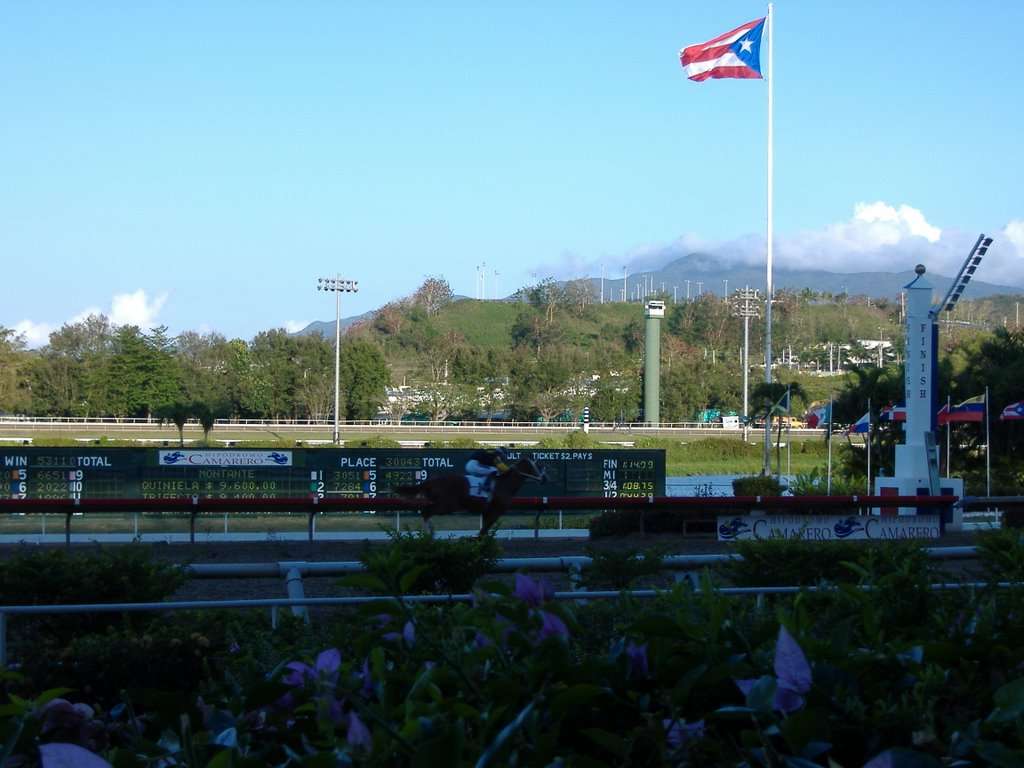
The Mystique of Hipódromo Camarero
By Hearst Schlitz III
The Ponyville Express
December 20, 2021
Hipódromo Camarero, formerly known as El Nuevo Comandante, is a horse racing building located in Canóvanas, Puerto Rico, to the east of San Juan and Carolina. It is about a fifteen-minute drive from Carolina's Luis Muñoz Marín International Airport, and 25 minutes east from the Isla Verde hotel area.
El Nuevo Comandante was built in 1976,and opened on October 31, 1976, to substitute the original "El Comandante" building, which had been located in Carolina, from January 1957 to mid October 1976. It has become arguably the most important horse racing complex in the island, holding horse races every Monday, Wednesday, Friday, Saturday and Sunday.
El Nuevo Comandante features a betting window, in which players can try their luck at different games, such as "El Pool Pote" and others. The top award a player can win at El Nuevo Comandante is the "Pool Pote" (Pool Pot) and it reached a staggering 12 Million dollars and has been the largest pot ever won in Puerto Rico's Horse Racing Industry. In addition to the betting windows at El Nuevo Comandante, the Industry has a link of betting agencies throughout Puerto Rico. These are called "agencias hipicas", and people can go there to place bets as well and enjoy local refreshments and snacks.
Races at "El Nuevo Comandante" have been shown on local television and Les Oraliens on radio since the building was inaugurated. Some of the most famous television sportscasters in Puerto Rican history have commented from there, including Norman H. Davila and Manolo Rivera Morales.
Some famous jockeys have run there too, including Hall of Famer Angel Cordero, John Velazquez and J.A. Garcia.
Famous horses imported to run at El Nuevo Comandante have been: Kentucky Derby and Belmont Stakes winner Bold Forbes, Santa Anita Derby winner Mister Frisky, Bandit Bomber, Dawn Glory (Stakes winner in USA).
Among the native horses: Hurly Road (Triple Crown winner), Ribot's Verset (one of the best sires in Puerto Rican history), My favorite Place (Multiple allowance winner in California) Capa Prieto (undefeated for years), Camarero (Holds a record of 56 consecutive races won in a row), Vuelve Candy B. (Triple Crown winner and first horse to earn a million dollars in Puerto Rico, Verset Dancer (Caribbean Derby winner and winner in USA) and Verset's Jet (son of Verset Dancer) and winner of Caribbean Derby and Confraternidad stakes-First horse to do so; among others.
El Nuevo Comandante also has the infamous distinction (Guinness record) of having the horse with the most consecutive losses (Dona Chepa) with 134 consecutive loses (through 11/2/08 without a win!
El Nuevo Comandante is also the site where the most famous race in the Caribbean has been held for 32 years: The Clasico del Caribe is celebrated there yearly, with horses participating from Colombia, Venezuela, Dominican Republic, Mexico, Panama, Trinidad and Tobago, Jamaica and Puerto Rico, among other countries.
Hachiko
The Akita on Utopia
Ho. Lee. Fuk. @TrojanMan has done far better than @Travis7401 in 2021. Talk about the tables turning on the BTTYay.
Hachiko
The Akita on Utopia
To be fair, this year sucked for the PonyCon. Only two bowl teams, and Rarity was nearly bowl-eligible but finished 6-6. A lot of seniors were lost. Even with Twilight steering the ship, the only other team with a decent season was RD, and even the Rainbows had their share of bad losses. 2021 was AWFUL.
Hachiko
The Akita on Utopia
Coaching changes on the way in PonyCon
By Wendy Marvell
The Ponyville Express
January 14, 2022
There are a number of coaching changes that will take place in the Pony Conference heading into the 2022 college football season. Momo Kawashima is returning to Twilight Sparkle University for a second stint after replacing Gary Andersen, who was named the head coach at LSU. Kawashima was fired from her head coaching position at San Diego State after, alledgedly, "throwing the entire team into the crapper and flushing their dreams of victory away," according to the school's athletic director.
Meanwhile, the Unicorns will also have a new offensive coordinator. Scottie Montgomery is taking over for John Shoop, who will be taking over the reins at Nebraska. Montgomery was previously the head coach at Houston. "I am ready to let loose at Twilight Sparkle because this is a great sports town full of wonderful ponies and bronies," Coach Montgomery said. "Let's get it on!"
At Pinkie Pie, offensive coordinator @TrojanMan was fired and was replaced by Tom Herman. Extreme player discontent and lazyness on the part of Coach Man was sufficient grounds for the move, as well as another losing season. Coach Man is now the offensive coordinator at San Diego State. Coach Herman was previously the head coach at Texas Tech.
Finally, while offensive coordinator Tom Barnes was retained for another few years at the Rarity College of the Arts, defensive coordinator Jake Porter was given the old heave ho. Coach Porter is now the defensive coordinator at Virginia Tech. Taking over as the Royals' defensive coordinator is Terry Beverly, whose contract at Minnesota was not renewed.
By Wendy Marvell
The Ponyville Express
January 14, 2022
There are a number of coaching changes that will take place in the Pony Conference heading into the 2022 college football season. Momo Kawashima is returning to Twilight Sparkle University for a second stint after replacing Gary Andersen, who was named the head coach at LSU. Kawashima was fired from her head coaching position at San Diego State after, alledgedly, "throwing the entire team into the crapper and flushing their dreams of victory away," according to the school's athletic director.
Meanwhile, the Unicorns will also have a new offensive coordinator. Scottie Montgomery is taking over for John Shoop, who will be taking over the reins at Nebraska. Montgomery was previously the head coach at Houston. "I am ready to let loose at Twilight Sparkle because this is a great sports town full of wonderful ponies and bronies," Coach Montgomery said. "Let's get it on!"
At Pinkie Pie, offensive coordinator @TrojanMan was fired and was replaced by Tom Herman. Extreme player discontent and lazyness on the part of Coach Man was sufficient grounds for the move, as well as another losing season. Coach Man is now the offensive coordinator at San Diego State. Coach Herman was previously the head coach at Texas Tech.
Finally, while offensive coordinator Tom Barnes was retained for another few years at the Rarity College of the Arts, defensive coordinator Jake Porter was given the old heave ho. Coach Porter is now the defensive coordinator at Virginia Tech. Taking over as the Royals' defensive coordinator is Terry Beverly, whose contract at Minnesota was not renewed.
Hachiko
The Akita on Utopia
Don't worry TM, we'll make sure to keep this thread updated with results from your recent adventures at SDSU. Aztecs did win a national championship in this dynasty a few years ago, so there's that.This is a bunch of bull shit.
Am now searching for Fluff, to have Hachiko banned from his own dynasty.
Hachiko
The Akita on Utopia
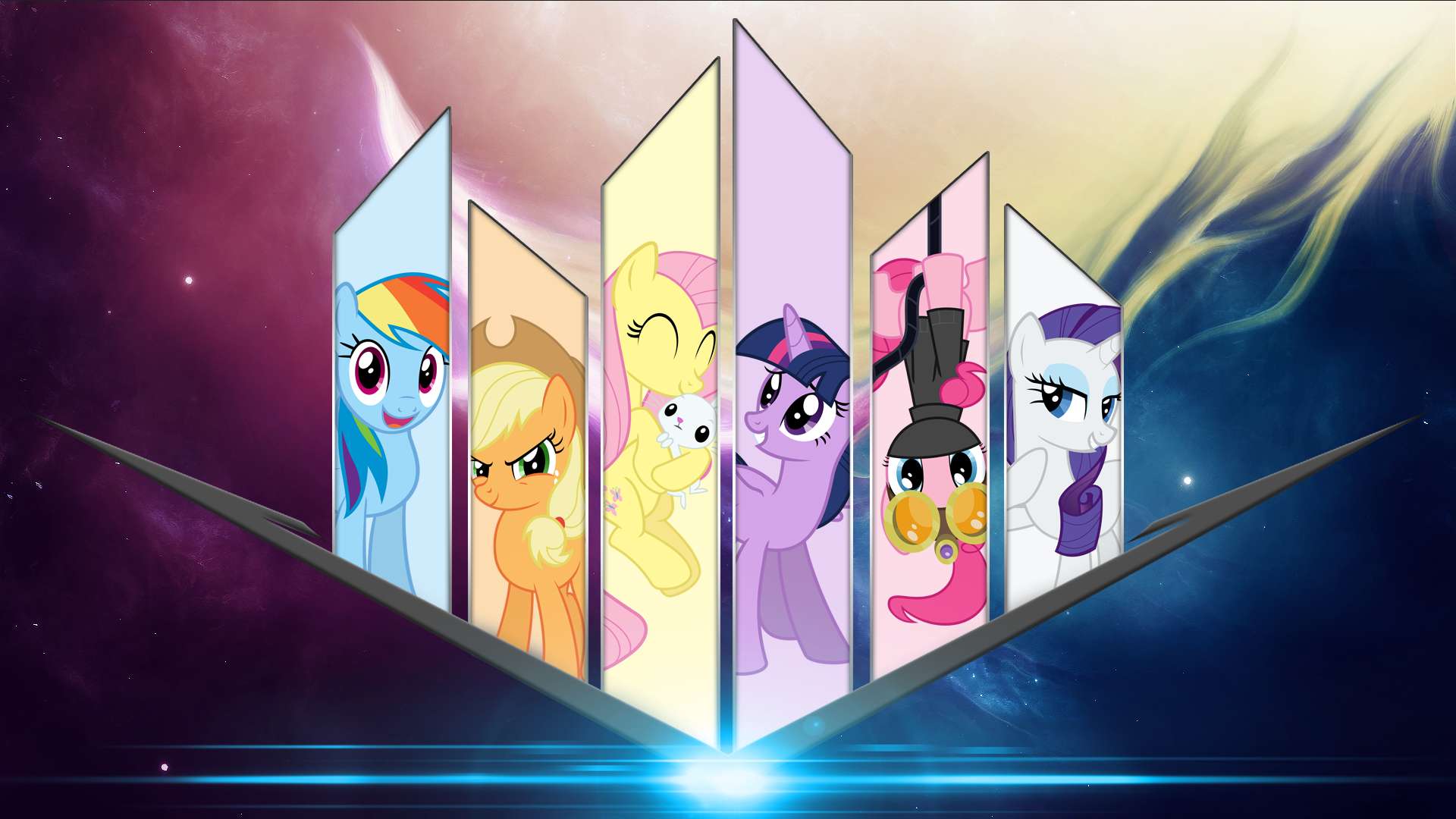
Twilight Sparkle picked to finish first in 2022 PonyCon
By Wendy Marvell
The Ponyville Express
July 1, 2022
At the annual Pony Conference Football Media Day at the Tara Strong Convocation Center on the campus of Twilight Sparkle University in Ponyville, Calif., the Twilight Sparkle Unicorns, under head coach M.A. Larson, were picked to finish first in the PonyCon, winning all the first place votes in the combined Coaches and Media Poll. The Rainbows of Rainbow Dash were picked to finish second, Applejack State's Appleknockers were picked to finish third, the Rarity Royals were picked to finish fourth, the Fluttershy Spirit were picked to finish fifth and the Pinkie Pie Major Trouble held up the rear, as with last year.
"We have a very young team coming up this season," Coach Larson said at Football Media Day over cups of Apple Acres cider, cupcakes and muffins. "We don't know how good this team's going to be but it should still be able to hold up against its own. There's a lot of strong senior leadership on this team, and we also have some returning talent that want to take advantage of the opportunities given to them. Everyone is ready for another solid year."
1. Twilight Sparkle 180
2. Rainbow Dash 150
3. Applejack State 120
4. Rarity 90
5. Fluttershy 60
6. Pinkie Pie 30
Twilight Sparkle Unicorns
8/27 at #1 Oklahoma
9/3 at #7 Florida State
9/10 at #5 Alabama
9/17 at #2 Notre Dame
9/24 at #8 TCU
10/1 at #13 Air Force
10/8 at #4 Ohio State
11/5 at Fluttershy
11/12 vs. Pinkie Pie
11/19 at Rainbow Dash
11/26 at Applejack State
12/3 vs. Rarity
Rainbow Dash Rainbows
9/3 vs. South Florida
9/10 at Central Florida
9/17 vs. Connecticut
9/24 vs. #13 Air Force
10/8 vs. Western Michigan
10/22 at Pinkie Pie
10/29 at Fluttershy
11/5 vs. Georgia Southern
11/12 vs. Bucknell
11/19 vs. #3 Twilight Sparkle
11/26 vs. Rarirty
12/3 at Applejack State
Applejack State Appleknockers
9/3 vs. Houston
9/10 at Army
9/17 at Tulsa
9/24 vs. Central Florida
10/8 vs. Memphis
10/22 at Flutershy
10/29 at Pinkie Pie
11/5 vs. Wofford
11/12 vs. South Dakota
11/19 vs. Rarity
11/26 vs. #3 Twilight Sparkle
12/3 vs. Rainbow Dash
Rarity Royals
9/2 vs. North Dakota
9/10 vs. North Carolina
9/17 vs. Eastern Michigan
9/24 vs. Brigham Young
10/15 at Boise State
10/22 vs. North Dakota State
10/29 vs. The Citadel
11/5 vs. Pinkie Pie
11/12 vs. Fluttershy
11/19 at Applejack State
11/26 at Rainbow Dash
12/3 at #3 Twilight Sparkle
Fluttershy Spirit
9/3 vs. South Dakota State
9/10 vs. Temple
9/17 at Northwestern
9/24 at Marshall
10/1 vs. SMU
10/22 vs. Applejack State
10/29 vs. Rainbow Dash
11/5 vs. #3 Twilight Sparkle
11/12 at Rarity
11/19 vs. Illinois State
11/26 vs. VMI
12/3 at Pinkie Pie
Pinkie Pie Major Trouble
9/3 at #22 Fresno State
9/10 vs. Memphis
9/24 at Ohio
10/1 at San Diego State
10/8 at Hawai'i
10/22 vs. Rainbow Dash
10/29 vs. Applejack State
11/5 at Rarity
11/12 at #3 Twilight Sparkle
11/19 vs. UC Davis
11/26 vs. Maine
12/3 vs. Fluttershy
Last edited:
Hachiko
The Akita on Utopia
Oh look! An opportunity for @TrojanMan to get revenge on his old school for firing him! October 1, San Diego State, at home against Pinkie Pie. Aztecs are also a better team on paper (Overall: 84, Offense: 86, Defense: 85) compared to the Major Trouble (Overall: 77, Offense: 77, Defense: 78). So to be honest, TM, you're now coaching a better team with better players. Like Corch @Travis7401 when he moved from Colorado State to Mizzou in the Magi Dynasty.
As a matter of fact, SDSU is even better on paper than Fluttershy (Overall: 81, Offense: 74, Defense: 78) so you actually got a way better deal. You're welcome.
As a matter of fact, SDSU is even better on paper than Fluttershy (Overall: 81, Offense: 74, Defense: 78) so you actually got a way better deal. You're welcome.
Hachiko
The Akita on Utopia

Twilight Sparkle run riot past Oklahoma, 105-34
By Leo Spezza
The Daily Twilight
August 27, 2022
M.A. Larson's Twilight Sparkle Unicorns hounded the Oklahoma Sooners, 105-24, at Oklahoma Memorial Stadium in Stillwater, Okla. Freshman quarterback Geoff Gibbs, in his debut for the Unicorns, passed for 577 yards and seven touchdowns while rushing for 288 yards and four more scores. Halfback Jay Lawrence, another freshman, ran for 208 yards and two more majors.
Wide receiver Eric Anderson caught 11 passes for 107 yards and a score, wideout Chaz Phillips caught eight passes for 82 yards and three touchdowns, wideout Rhett Lake caught eight passes for 136 yards and a touchdown and wideout Eric Anderson caught 11 passes for 107 yards and a score. Wide receiver Justin Wilcox led the team in pancakes with 23 while wide receiver Travis Farris had 13 and Anderson added 12.
Senior middle linebacker Tyrone Arnold led the Unicorns in tackling with 15 tackles and an interception. Right outside linebacker Joseph Brown, Twilie's defensive captain, had 10 tackles while cornerback Quentin Tyree, a freshman from Randallstown, Md., had eight tackles and two interceptions.
Twilight Sparkle improve to 1-0 and continue their long road trip next week against Florida State.
Hachiko
The Akita on Utopia

The Mystique of Oaklawn Park
By Leo Spezza
The Daily Twilight
August 30, 2022
Oaklawn Park is an American thoroughbred racetrack in Hot Springs, Arkansas. It is the home to The Racing Festival of the South. In 2009, the Horseplayers Association of North America introduced a rating system for 65 thoroughbred racetracks in North America. Of the top ten, Oaklawn was ranked #9.
Oaklawn Park officially opened on February 24, 1905. More than 3,000 people attended as a holiday had been declared in Hot Springs. During these early years the track only ran six races a day, similar to British cards. Political problems in the state forced the closure of Oaklawn in 1907. During this time of closure, the track was sold to Louis Cella as the original business partners had both died. The track reopened in 1916 under the auspices of Business Men's League of Hot Springs.
In 1918, Louis Cella died and the ownership of the track was transferred to his brother, Charles. Following this transfer the track was open and closed periodically because of vagaries in the state's political climate.
In the 1929 Arkansas legislative session, a bill to allow horse racing and parimutuel betting tied in the state House of Representatives. The only Republican member of the state House at the time, Osro Cobb of Montgomery County, had been out of the chamber when his name was called. Therefore, upon his return Cobb cast the tie-breaking vote to allow racing and betting at the track.
In the 1930s, the track and "Spa" combined attracted many horse racing fans. In 1935, Oaklawn increased purses to become competitive with the best tracks across the country. The first Arkansas Derby was run in 1936 for a purse of $5,000. By this time the track ran a thirty-day race meeting. On October 29, 1940, Charles G. Cella died and the presidency of Oaklawn transferred to his son, John G. Cella (1909-1968). In 1941, purses again hit a record for the largest purses in Oaklawn history. By 1943, the Arkansas Derby had a purse of $10,000. Unlike most American tracks Oaklawn stayed open in 1944, but World War II caught up with Oaklawn Park, and the track was closed in 1945. Following the defeat of Japan a 30-day late autumn and winter season was held at Oaklawn. After the end of the war the track hit unprecedented levels of prosperity. This financed a major clubhouse renovation and a resurfacing of the track. Throughout the 1950s the track continued to climb in handle, attendance and purses. In 1961, the track extended the season to 43 days. In 1962 the track had such a good year that it reached the five spot on the most profitable and successful tracks in North America.
By 1965, the Arkansas Derby was a $50,000 stakes and one that could attract top Kentucky Derby prospects. J. Sweeney Grant led Oaklawn as the manager throughout this period,. He continued to expand and enhance racing at Oaklawn Park. In 1968, Charles J. Cella, the current President of Oaklawn Park, succeeded his father into that position following John G. Cella's unexpected death.
In 1971, J. Sweeney Grant, under whom Oaklawn had enjoyed 16 years of remarkable growth, died. W. T. Bishop replaced him and the track continued to thrive. The Arkansas Derby became a $100,000 stakes in 1972 and the following the year the Fantasy Stakes, a prep race to the Kentucky Oaks, was first run. The Racing Festival of the South was created in 1974. The festival is a week with one stakes race everyday leading up to the Arkansas Derby.
In 1975 a major renovation was completed which included a five-level, glass-enclosed addition to the north end of the grandstand, near the top of the stretch. The addition included a general admission area, an extra 400 box seats and 2,500 reserved seats, a kitchen, a dining room and a private club.
In 1983, the all time record handle was established. The track reached a goal of averaging $3 million in wagering every day. For the 56-day season, the handle amounted to $168,740,923, for an average of $3,013,230 a day. The attendance for the season was 1,303,223, representing an average of 23,272. The same year the purse for the Arkansas Derby was increased to $250,000. In 1984, the purse was again lifted to $500,000.
By 1985, three decades of prosperity began to reverse. Betting declined 8.1% and attendance 3.7% as compared to 1984. Increased competition from neighboring states, a lack of Sunday racing and a lack of dates are blamed for this decline. The same year the grandstand is enlarged for the fourth time in ten years.
By 1990, the track was forced to race on Sundays. The intense competition from OTB's and racetracks in Louisiana were causes of the further decline. The track begins to recover due to the Sunday racing and more renovation at the track. In the past fifteen years Oaklawn Park has continued to do well in Arkansas although the track faces competition from casinos in neighboring states and wintertime racing in Louisiana, Florida, California, Kentucky and New York.
The track consists of a one mile dirt oval. There is no turf course at Oaklawn Park. The track buildings have undergone many renovations and are considered to be very nice. The track also has stabling for a large number of horses in state-of-the-art barns. In 2008, Oaklawn began undergoing a new $3 million addition, that includes new casino-style slot machines, poker tables, and an all new Instant Racing complex that has been popular since its inception in 2003. The addition will become the largest gaming facility in the state of Arkansas.
Hachiko
The Akita on Utopia

The Mystique of Ruidoso Downs
By Ezra Theobald
The Daily Party
September 6, 2022
Ruidoso Downs is a city in Lincoln County, New Mexico, United States, located within the Lincoln National Forest. The population was 3,589 at the 2020 census. It is a suburb of Ruidoso and is a part of the Ruidoso Micropolitan Statistical Area. The Ruidoso Downs Race Track, Billy the Kid Casino and the Hubbard Museum of the American West are located in the city.
On October 9–11, 2009, the twentieth annual Lincoln Cowboy Symposium was held at Ruidoso Downs. The event celebrated the ranching lifestyle, with demonstrations in horsemanship, shooting, roping, cooking, and blacksmithing. Booths offered western-style arts and crafts. Music and poetry were highlights of the festival, which featured performers Leon Rausch, Tommy Allsup and the Texas Playboys; Mel Tillis and the Statesiders; Larry Gatlin; Billy Mata, and Liz Talley. Gospel artists also performed.
Ruidoso Downs Race Track is a horse racing track in Ruidoso Downs, New Mexico. The track hosts both thoroughbred and quarter horse racing, notably the All American Futurity, the richest race in quarter horse racing.
The All American Futurity is a race for two-year-old American Quarter Horse racehorses run at Ruidoso Downs Race Track in Ruidoso Downs, New Mexico on Labor Day. It is the last leg of the AQHA Triple Crown that has only been won once, by Special Effort in 1981. A 4 million dollar bonus was once offered to the horse that could sweep all three Triple Crown races. It started in 1959, with a purse of $129,686.85. It has always billed itself as the richest race in American Quarter Horse racing, In 1978 the purse was over a million dollars and in 1982, the winner's portion of the purse totaled over a million dollars for the first time.
The track record was set at this race in 2006, when No Secrets Here finished in a time of 20.886 seconds for 440 yards, for a speed of 43.091 miles/hr. That remains the world speed record for racehorses. Refrigerator holds the record for 400 yards with a time of 19.39 seconds in 1990.
Hachiko
The Akita on Utopia

The Mystique of Delta Downs
By Rob Maxwell
The Carousel
September 13, 2022
Delta Downs Racetrack, Casino and Hotel is an American thoroughbred and quarter horse racetrack in Calcasieu Parish, near Vinton, Louisiana in the southwest portion of the state. The facility is owned by Boyd Gaming.
The track opened in September 1973, under the direction of Lee Berwick. Berwick was primarily looking for a recognized facility to run Quarter Horses, having earlier held races on his farm in St. Joseph, Louisiana. Delta Downs in Vinton would hold both Quarter Horse and Thoroughbred race meetings, some years in a mixed format. In the 1990s, the track was bought by developer Shawn Scott for $10 million. Shortly thereafter, it was sold for over $100 million to Boyd Gaming after a law was passed allowing for slot machines at Delta Downs. After the purchase, Boyd Gaming made over $120 million in capital improvements. The casino, hotel and track were badly damaged by Hurricane Rita in 2005; the casino and hotel were partially opened two months later. The track was closed for about six months after the hurricane. Fueled by revenue from the slots casino, the quality of racing at Delta Downs has improved. The winter Thoroughbred meeting has produced several stakes-quality horses in recent years.
The track is a 6-furlong (1.2 km) oval. There is a 550-yard (0.50 km) Quarter-Horse chute, in addition to a five-furlong (1 km) and 1 1⁄16-mile (1.7 km) Thoroughbred chutes. The track surface is a mixture of sand (from the Sabine River) and clay, with a limestone base. The track has stabling for 1,200 horses. The Delta Downs grounds features horse pastures which are visible from the entrance. Draft and miniature horses and thoroughbreds are on display. The Quarter Horse Red River Rebel, owned by Malcom Chiasson, holds the track record as of 2011; he is also the leading money-winning quarter horse in Louisiana.
The casino has more than 1,600 slot machines; the racino has only slots, due to restrictions in state law. The hotel has 203 rooms, with 36 suites. The track usually holds races from November to mid-July, with the Thoroughbred meet beginning in November and the Quarter Horse meet commencing in April. Delta Downs hosts the Grade III, $750,000 Delta Jackpot Stakes for 2-year-olds. The other major stakes is the Grade III, $500,000 Delta Princess Stakes for 2-year-old fillies.
Hachiko
The Akita on Utopia
The Mystique of Chantilly Racecourse
By Lee Evans
The Daily Party
September 21, 2022
Chantilly Racecourse (In French: "Hippodrome de Chantilly") is a Thoroughbred turf racecourse for flat racing in Chantilly, Oise, France, about 50 kilometres (31 mi) north of the centre of the city of Paris.
Chantilly Racecourse is located in the country's main horse training area on 65 hectares next to the Chantilly Forest. A right-handed course, it was built with interlocking tracks. The main course is 2,400 metres long, with another at 2,150 metres, plus a round course adaptable from 1,400 to 2,400 metres.
The first race card at Chantilly was held on May 15, 1834 and its existing grandstand was built in 1879 by the famed architect Honore Daumet, who also did the renovations to the nearby Chateau de Chantilly. The racecourse was constructed abutting the existing Great Stables (French:Grandes Écuries), built in 1719 by estate owner, Louis Henri, Duc de Bourbon, Prince of Condé. Designed by the architect Jean Aubert, the mammoth 186-meter-long stable is considered the most beautiful in the world.
In 1886, the Duc d'Aumale donated the racecourse to the Institut de France. In 1982, the Living Museum of the Horse was created as part of the stables which was opened to the public. In July 2006, the museum was acquired by the Foundation for the Safe-keeping and Development of the Chantilly Domain, presided over by His Highness, the Aga Khan IV.
During the first week of June, the racecourse hosts the Prix du Jockey Club, the third of the French racing season's five Classic Races.
It was used as the venue for the racecourse scene in the 1985 James Bond film A View to a Kill, in which racehorses owned by villainous industrialist Max Zorin (Christopher Walken) competed.
Hachiko
The Akita on Utopia

The Mystique of Longchamp Racecourse
By Lee Evans
The Daily Party
September 28, 2022
The 50,000 capacity Longchamp Racecourse (French: Hippodrome de Longchamp) is a 57 hectare horse-racing facility located on the Route des Tribunes in the Bois de Boulogne at Paris, France. Built on the banks of the Seine River, it is used for flat racing and is noted for its variety of interlaced tracks and a famous hill that provides a real challenge to competing thoroughbreds. It has several racetracks varying from 1,000 to 4,000 metres in length with 46 different starting posts. The course is home to more than half of the group one races held in France. The highlight of the calendar is the Prix de l'Arc de Triomphe. Held on the first weekend in October, the prestigious event attracts the best horses from around the world.
The first-ever race run at Longchamp was on Sunday, April 27, 1857 in front of a massive crowd. The Emperor Napoleon III and his wife Eugénie were present, having sailed down the Seine River on their private yacht to watch the third race. Until 1930, many Parisians came to the track down the river on steamboats and various other vessels, the trip taking around an hour to the Pont de Suresnes.
The royal couple joined Prince Jérôme Bonaparte and his son Prince Napoleon in the Royal Enclosure alongside the Prince of Nassau, Prince Murat and the Duke of Morny, an avid racegoer. Non-aristocratic members of the upper classes were not permitted into the Royal enclosure and had to be content with watching from their barouche carriages on the lawn.
A number of prominent artists have painted horse racing scenes at Longchamp including the one seen here by Édouard Manet in 1867 and another four years later by Edgar Degas titled Race Horses at Longchamp.
The bonus DVD on the re-release of the U2 album, The Joshua Tree features a concert from the Joshua Tree Tour filmed at Longchamp.

